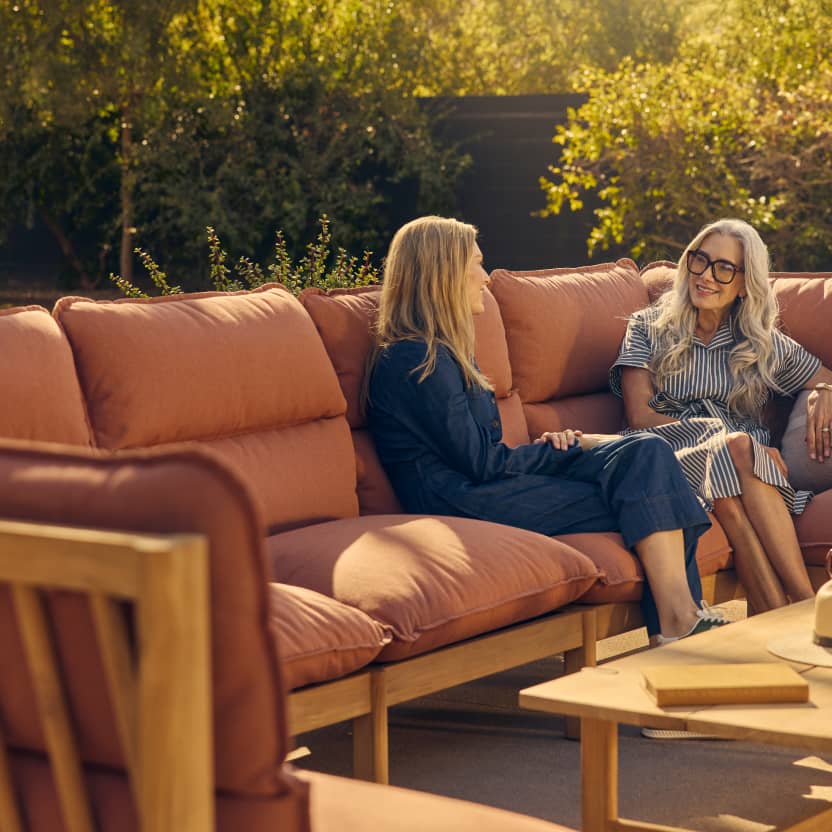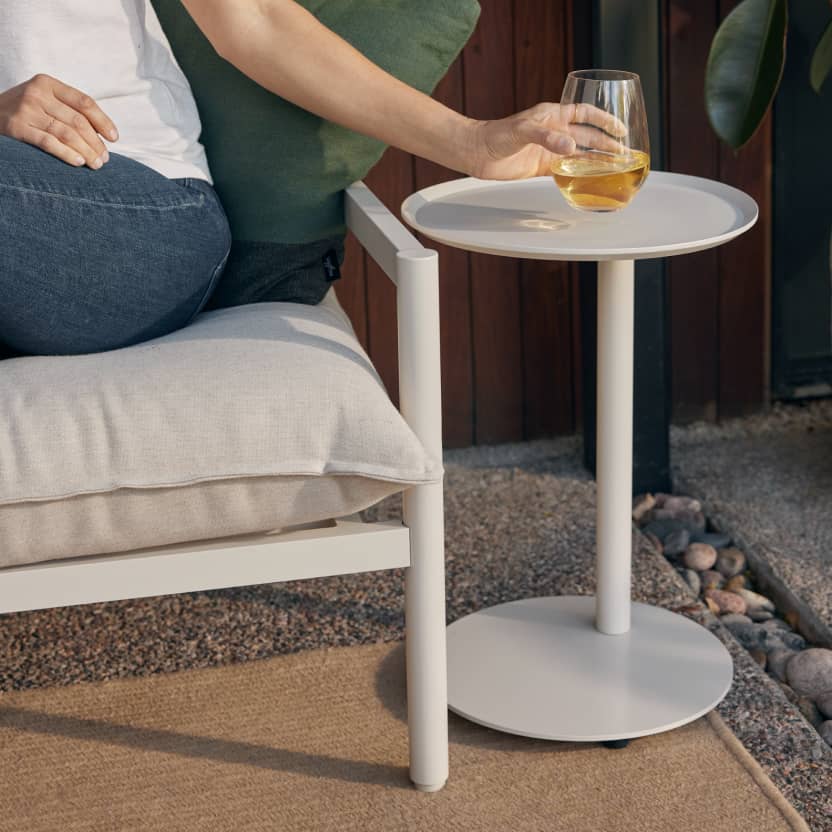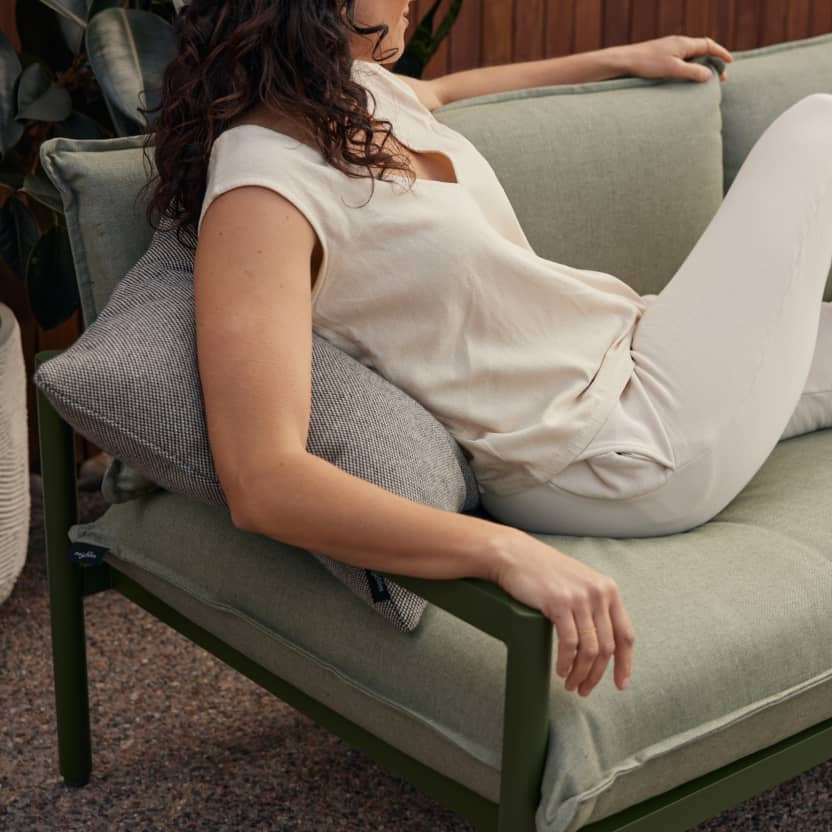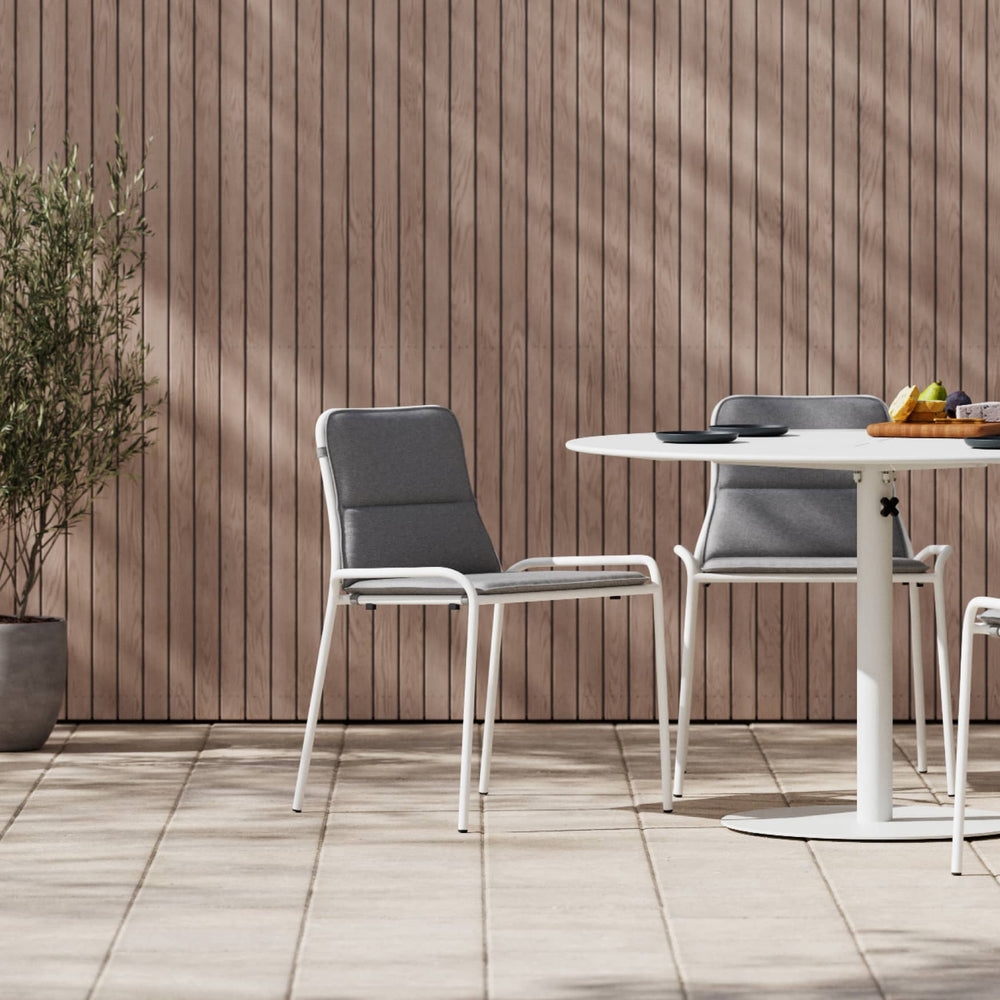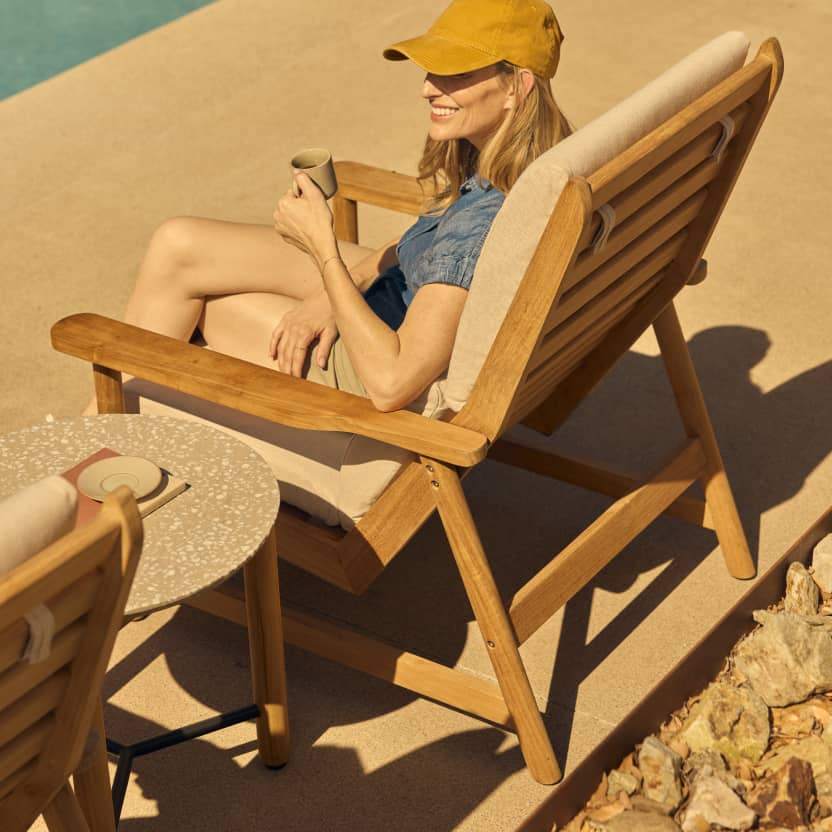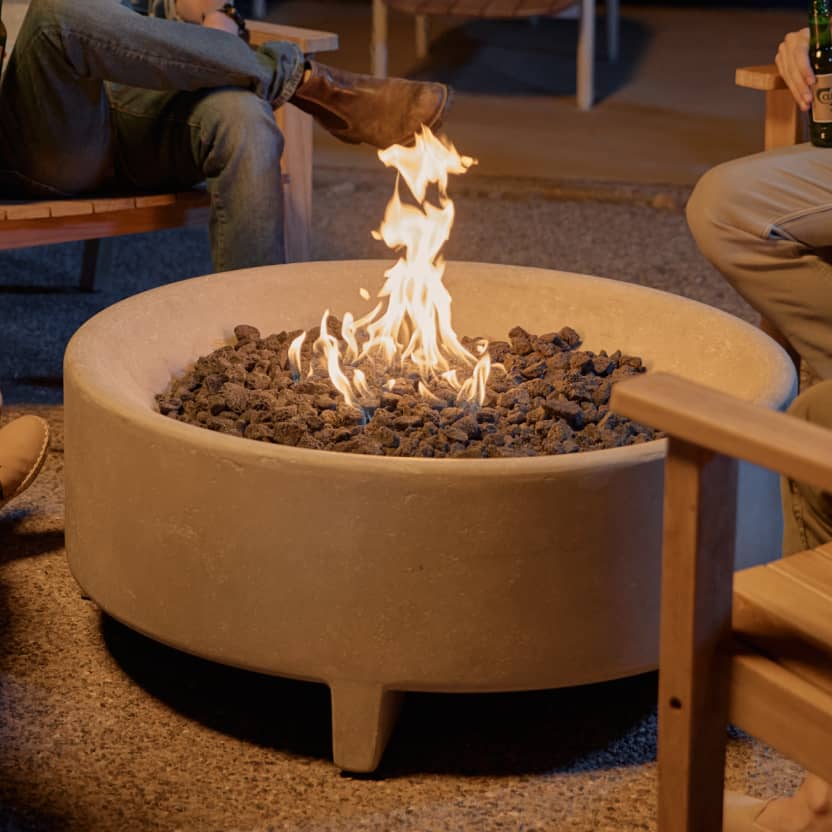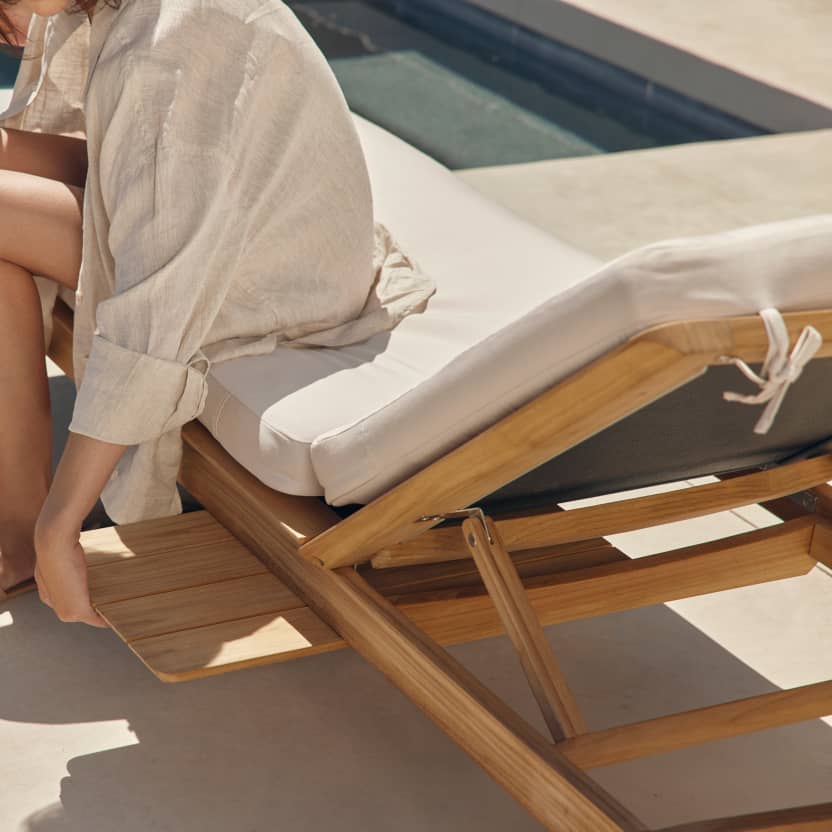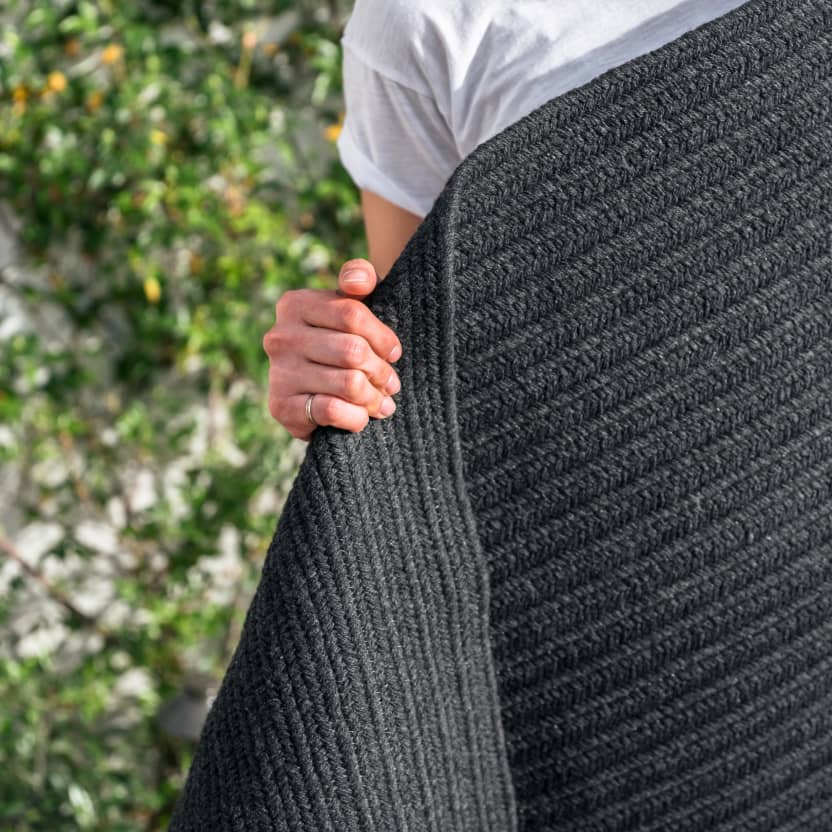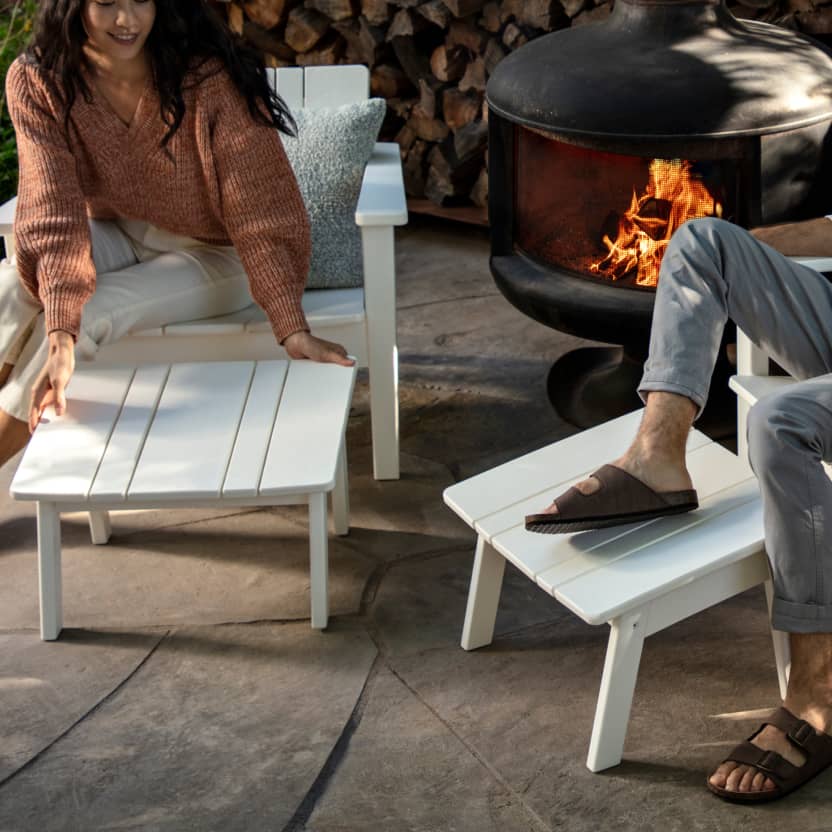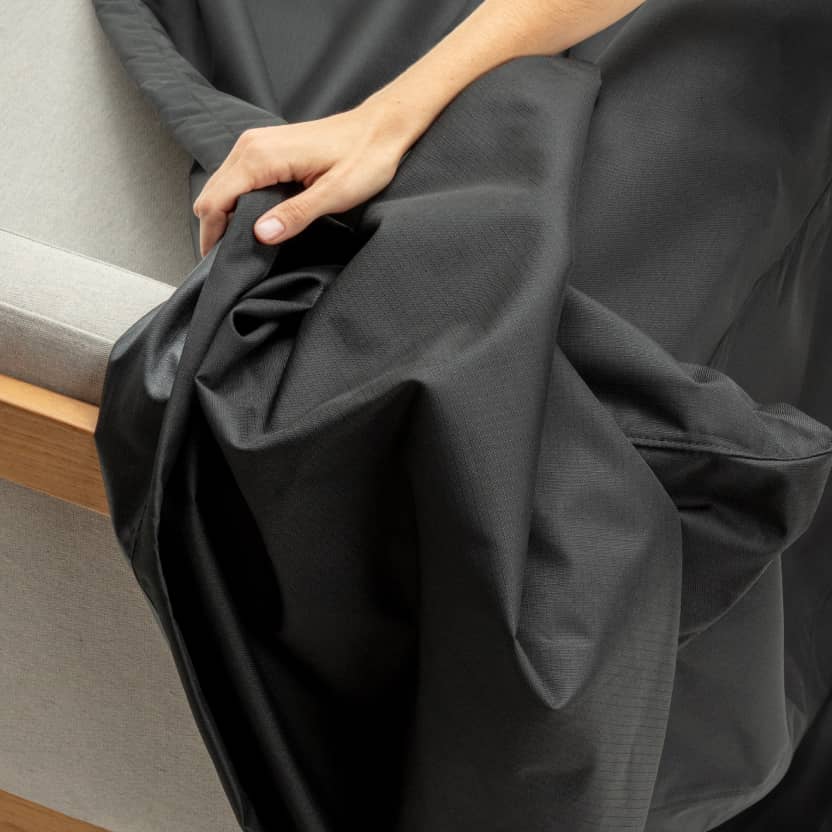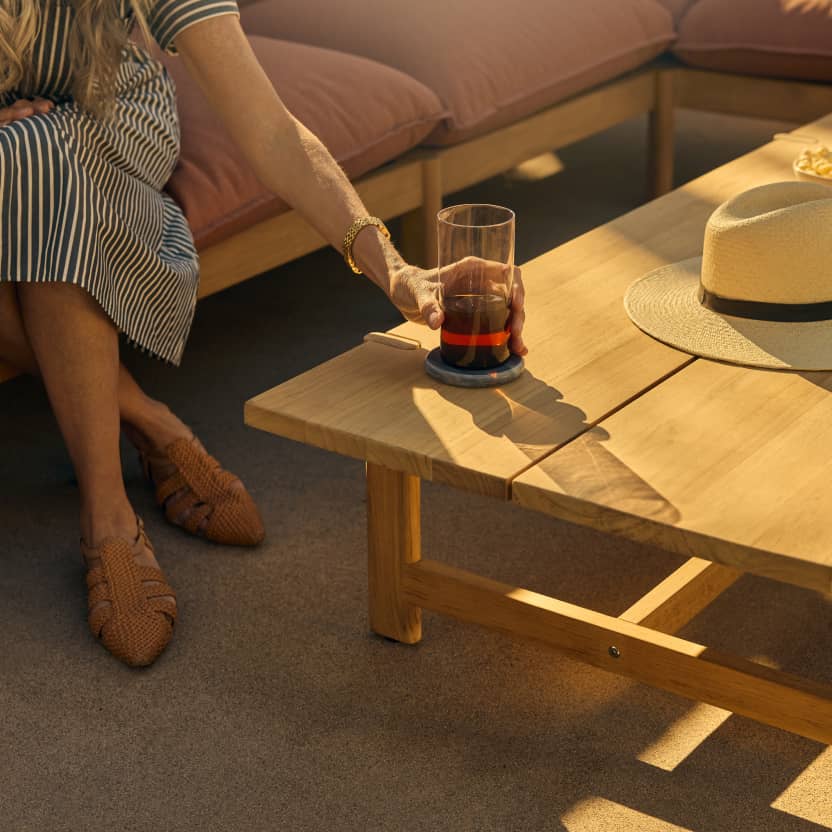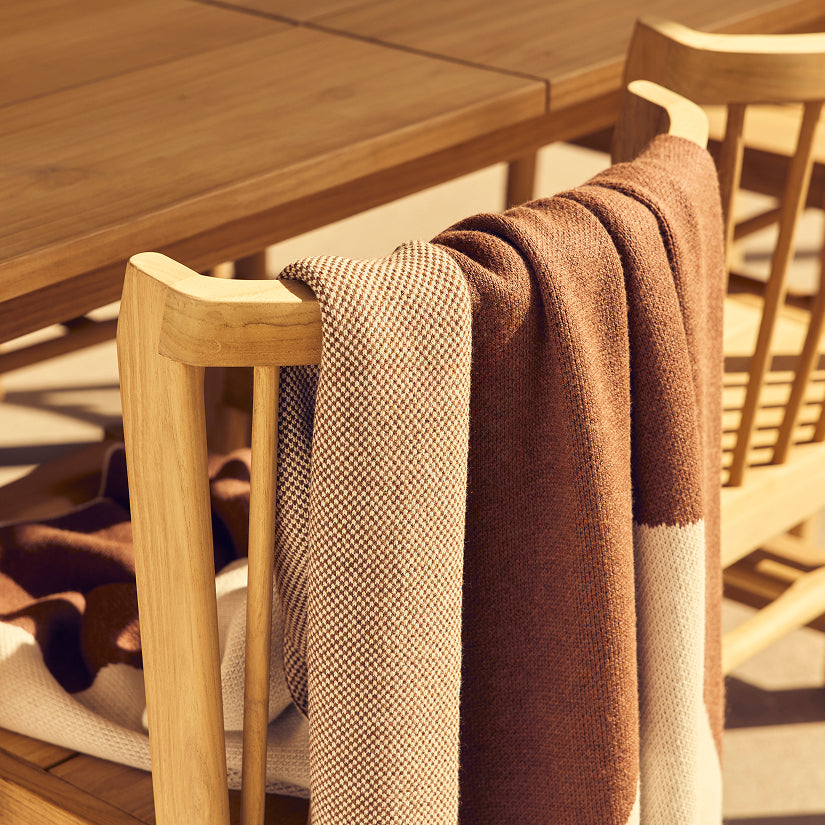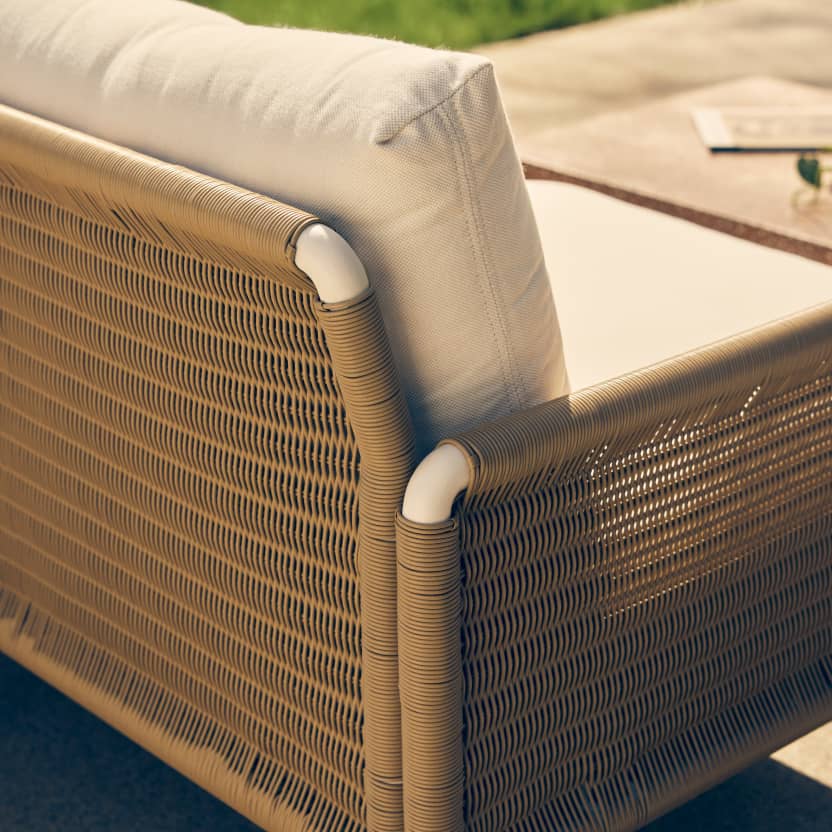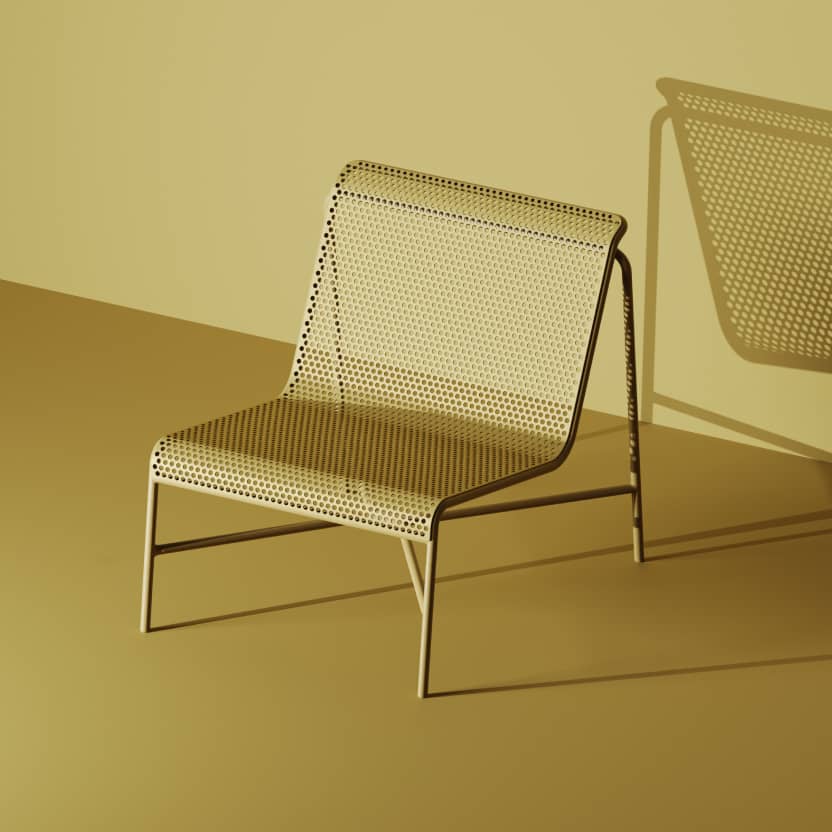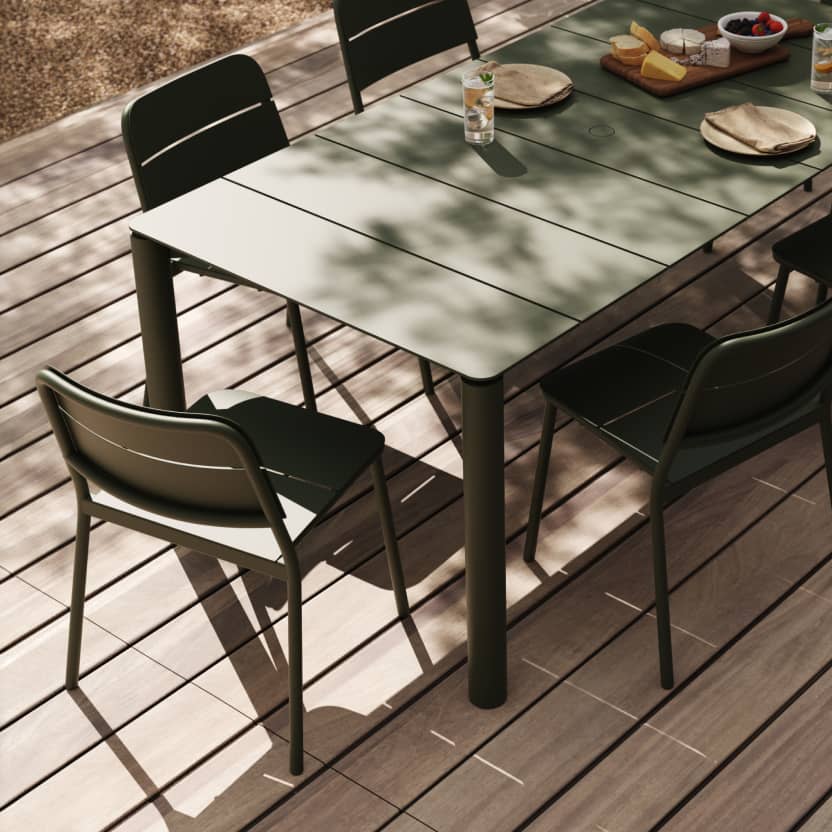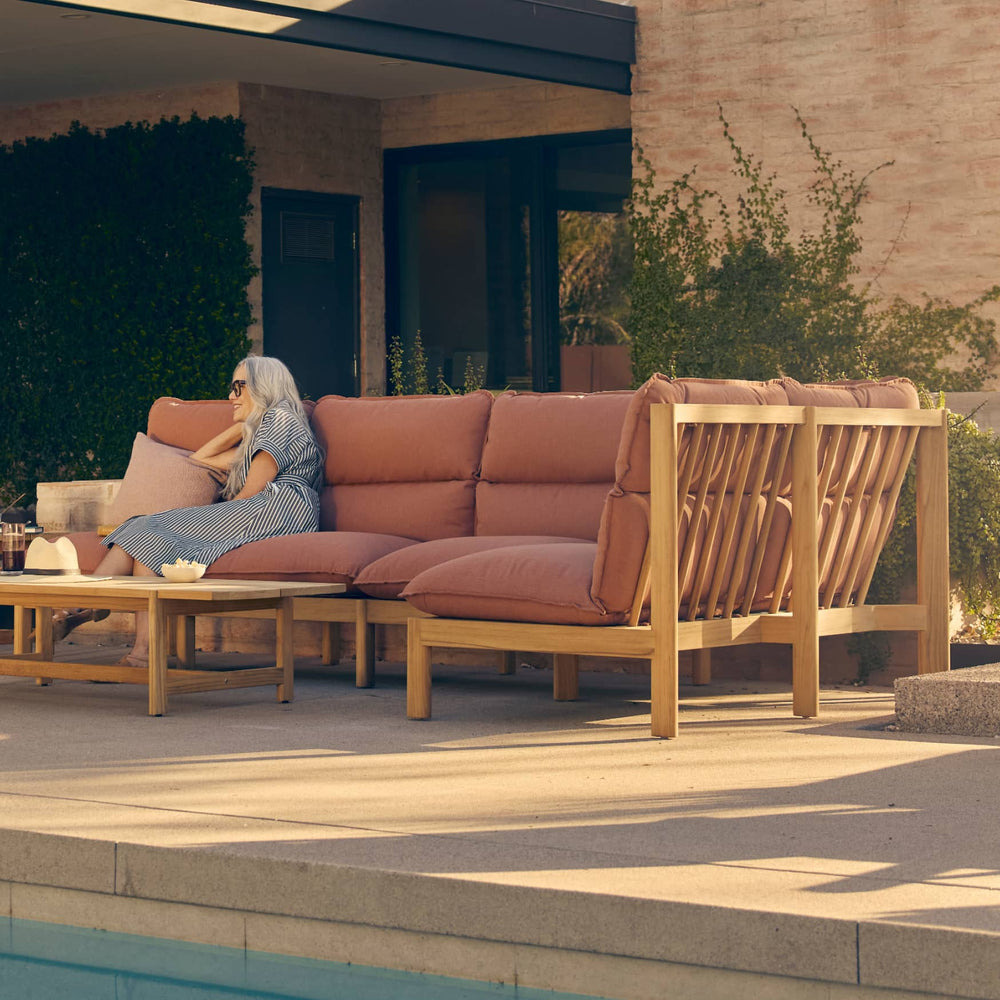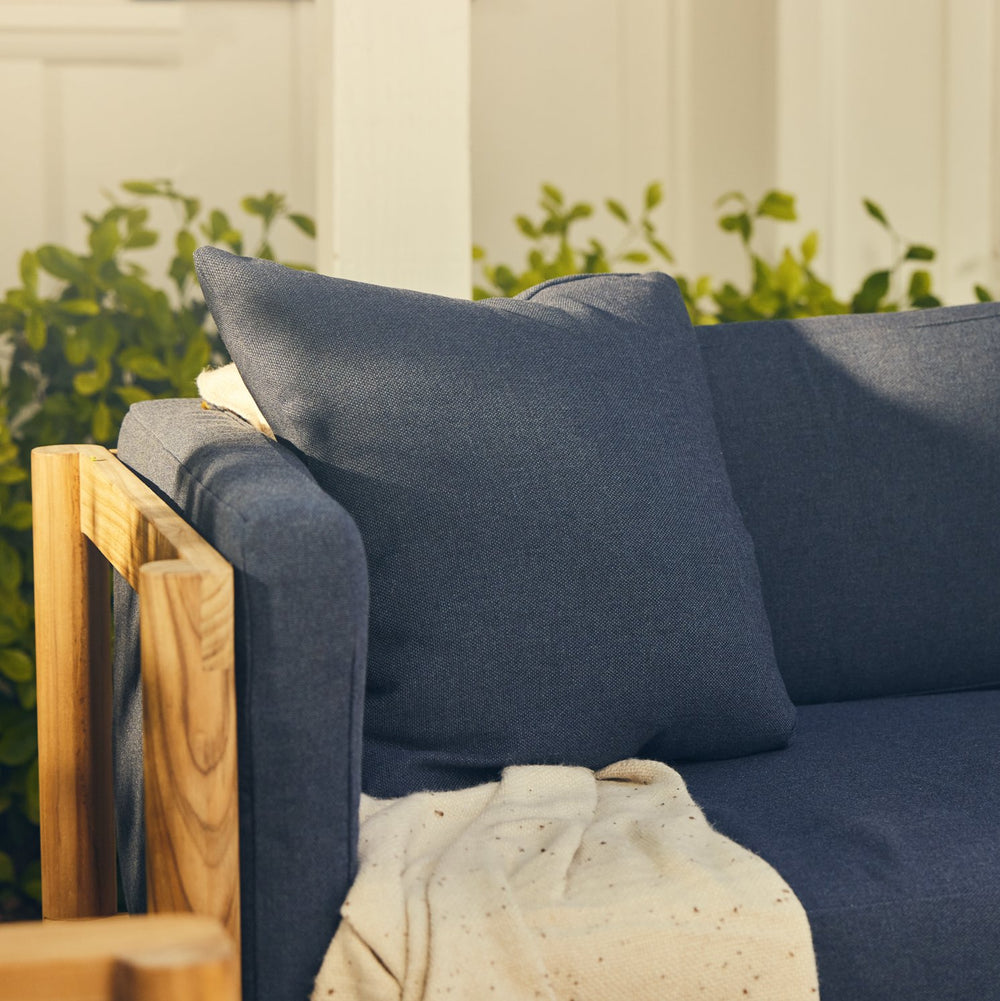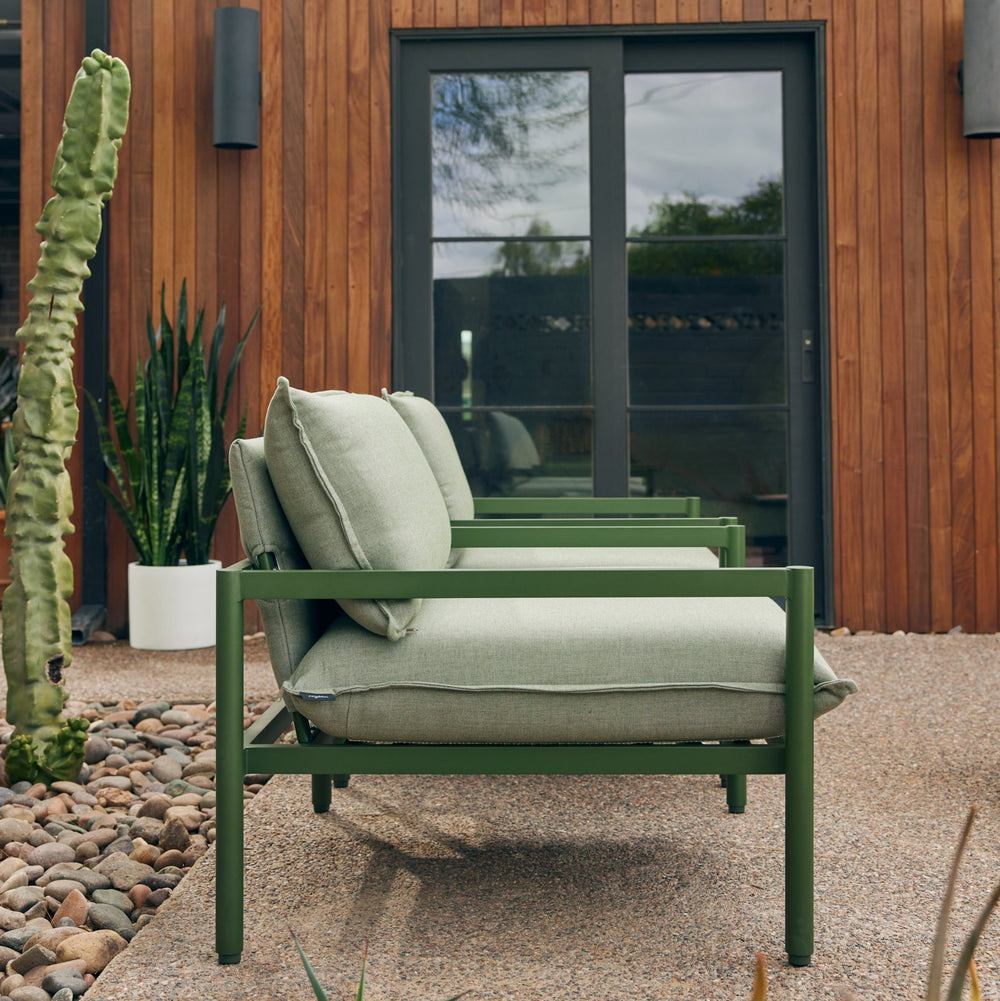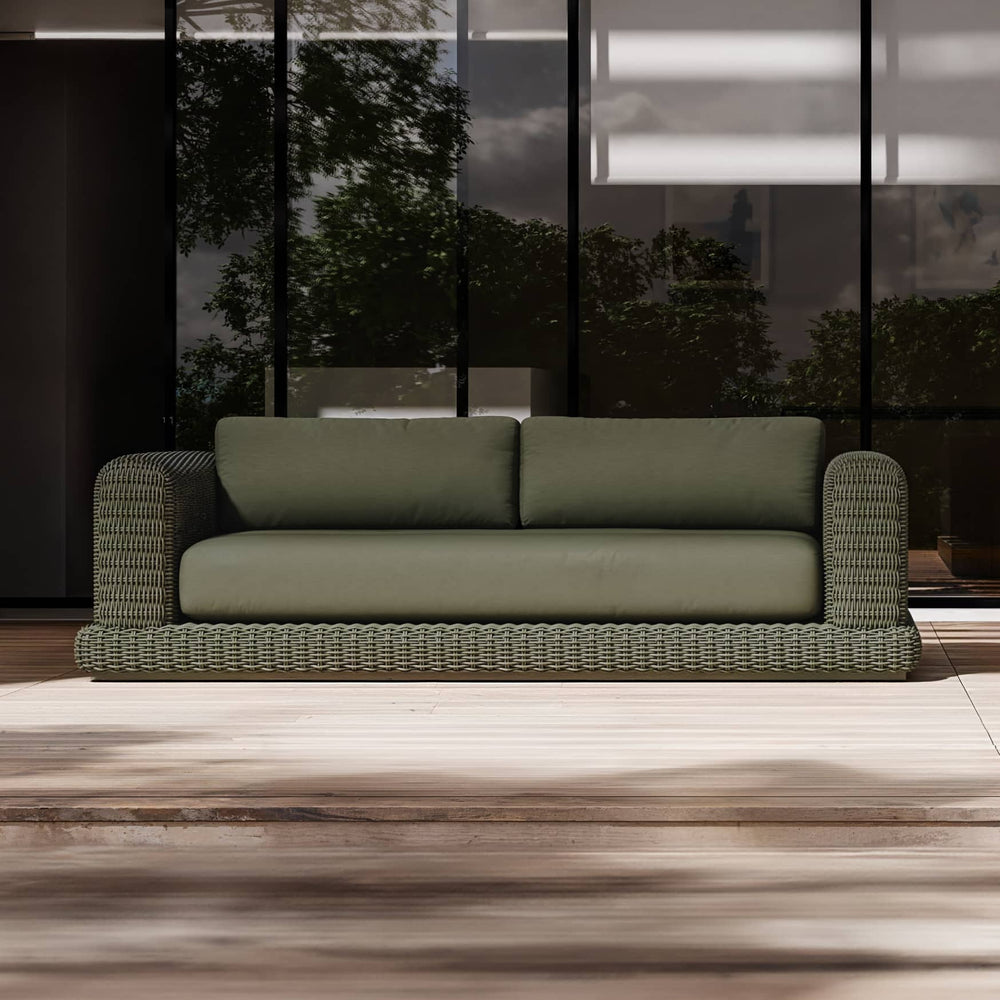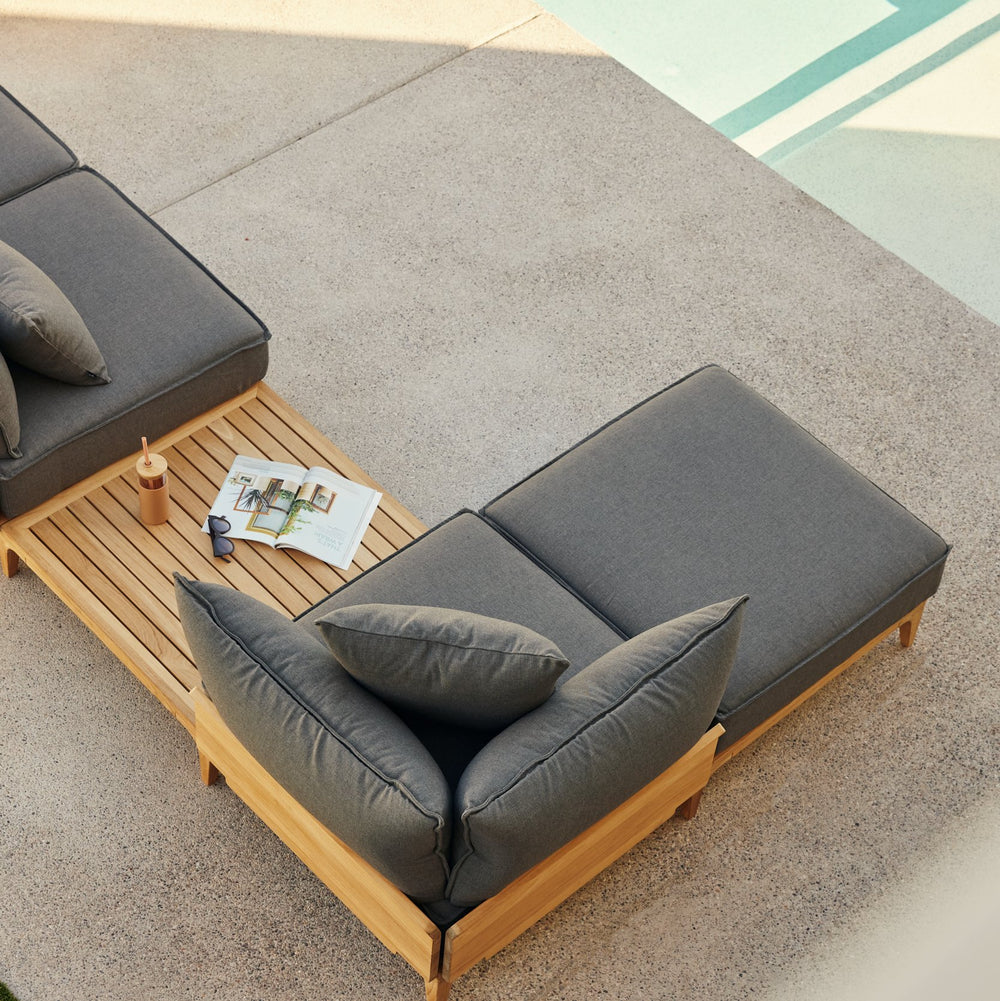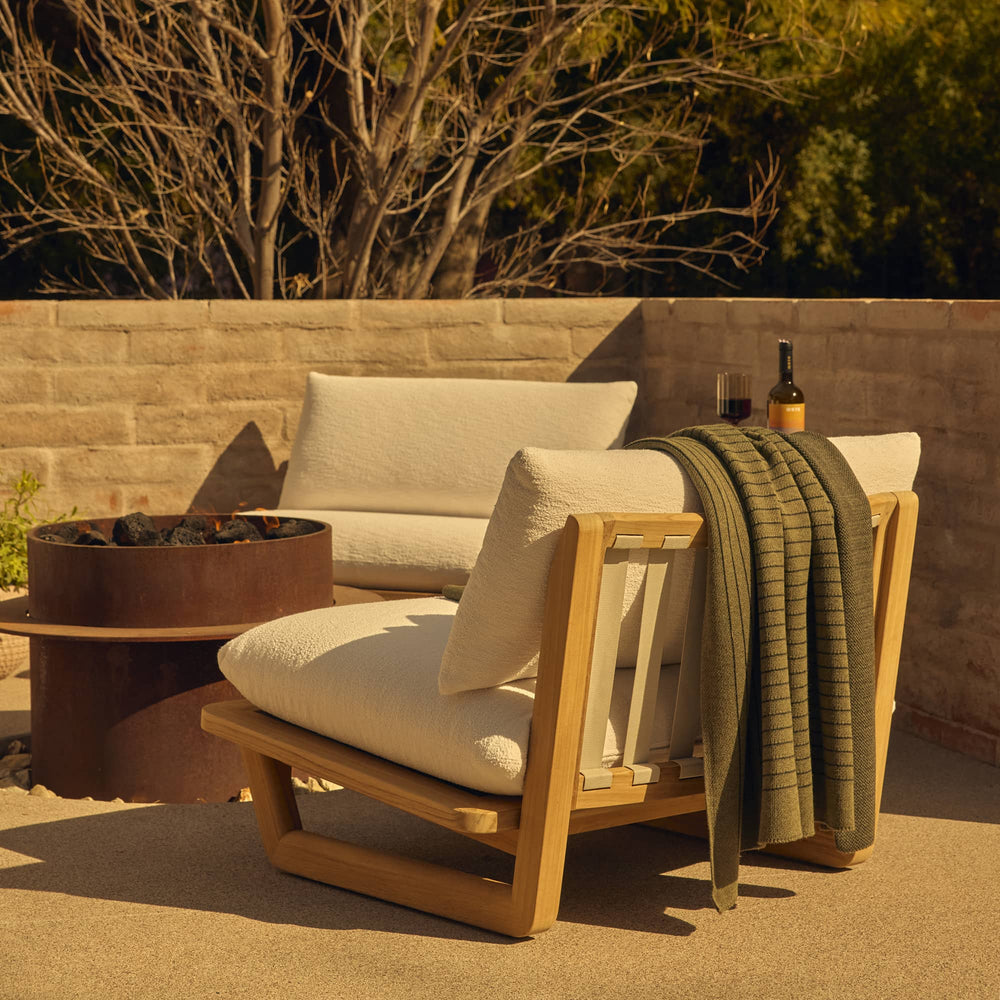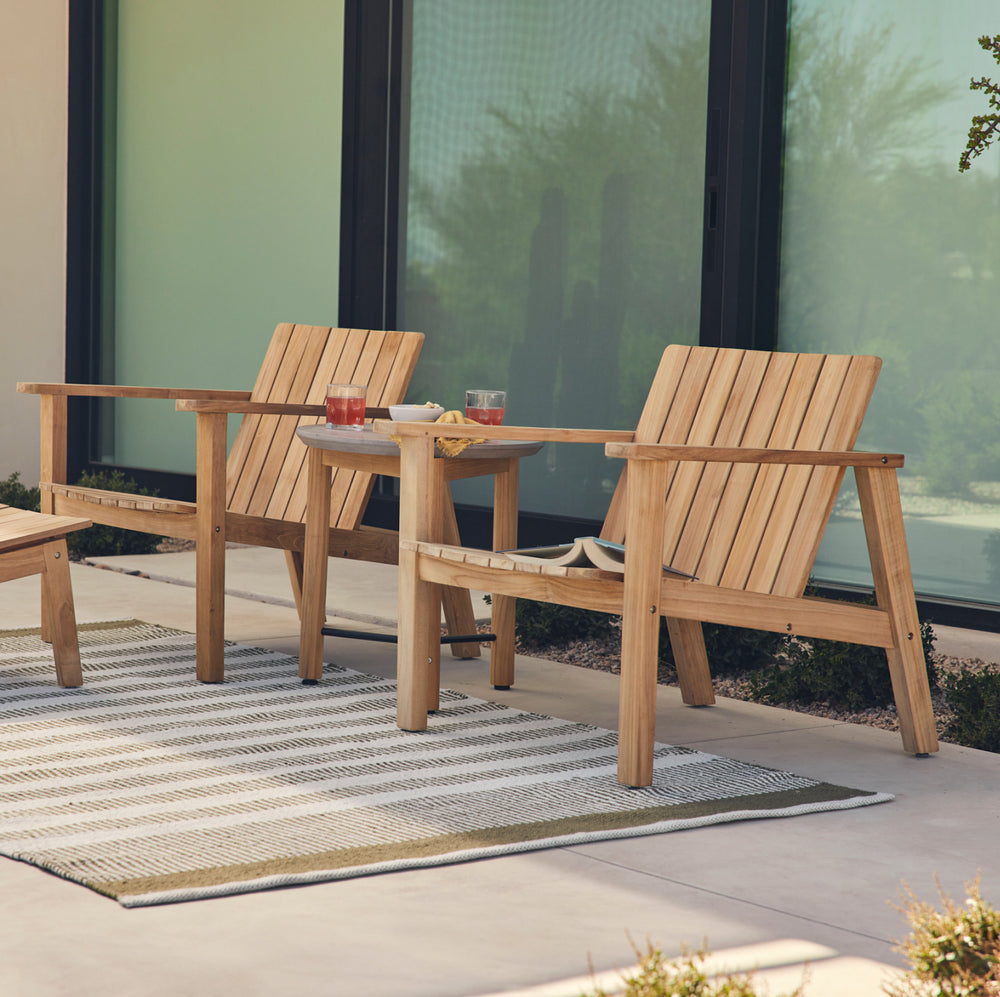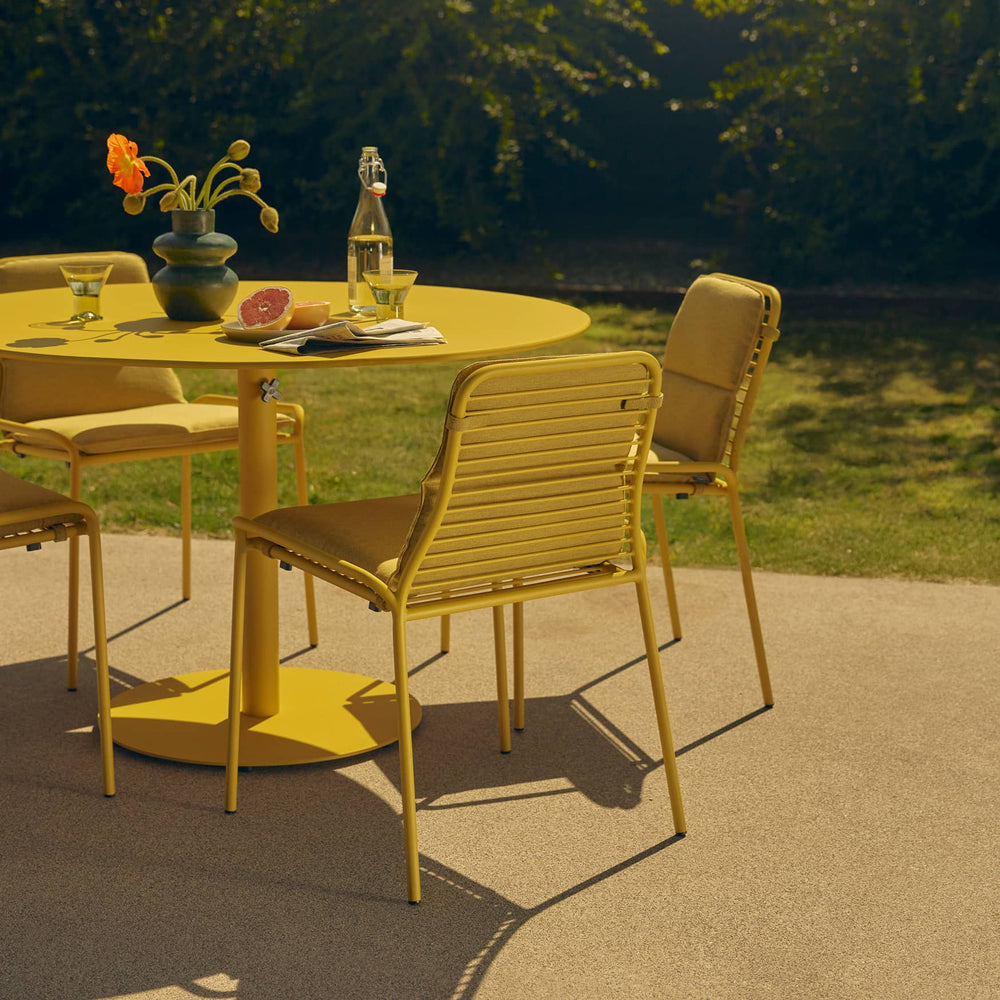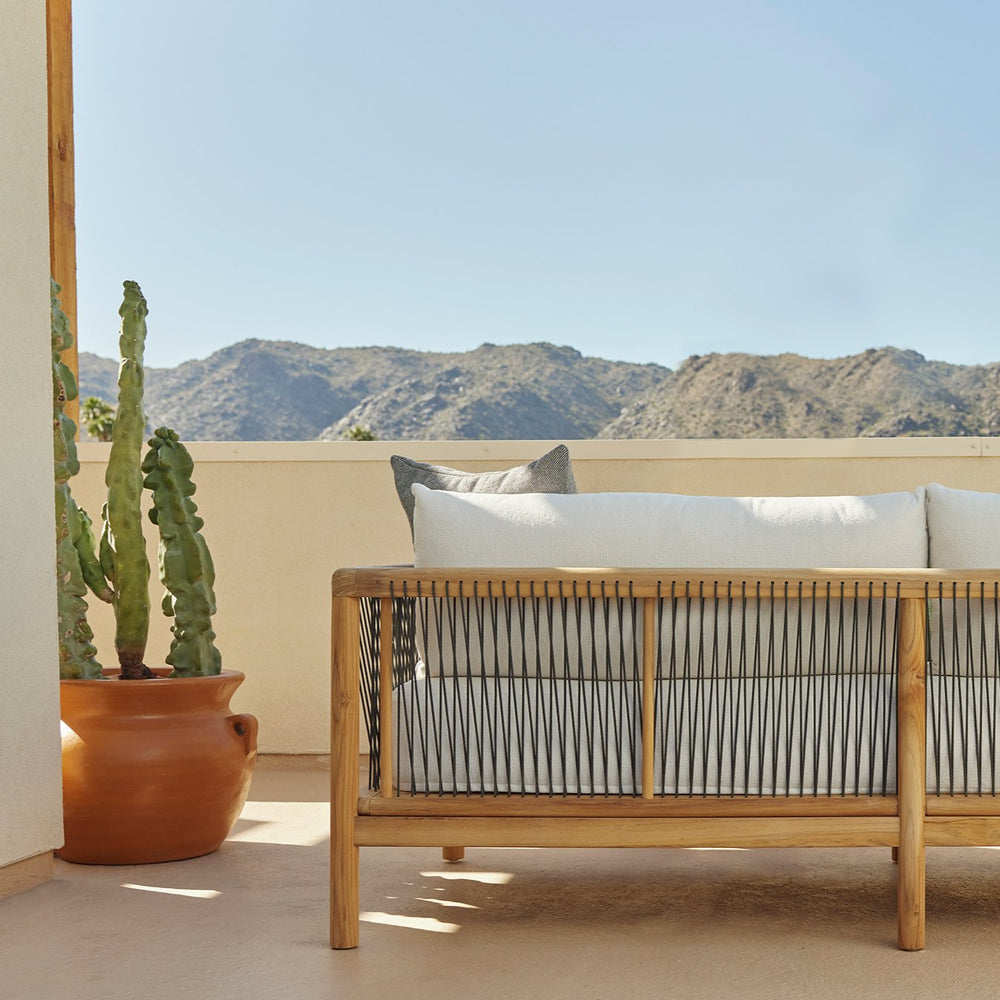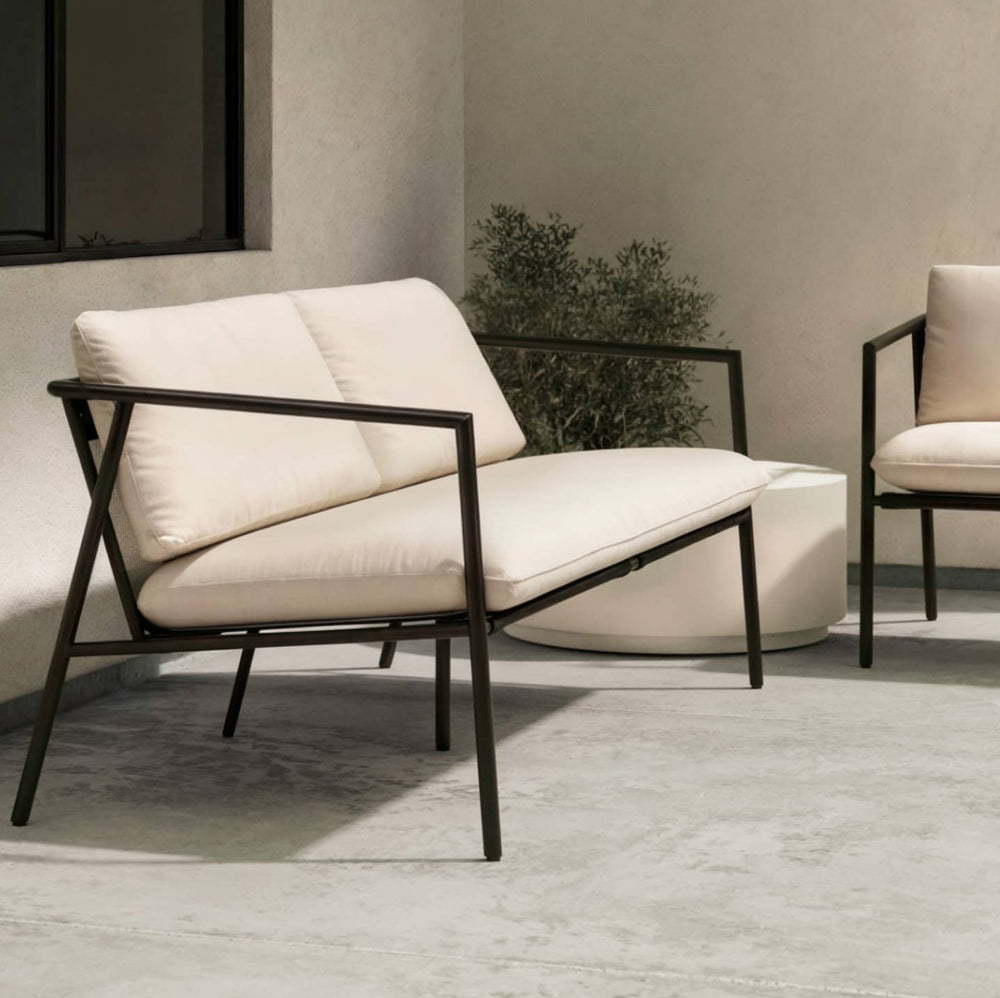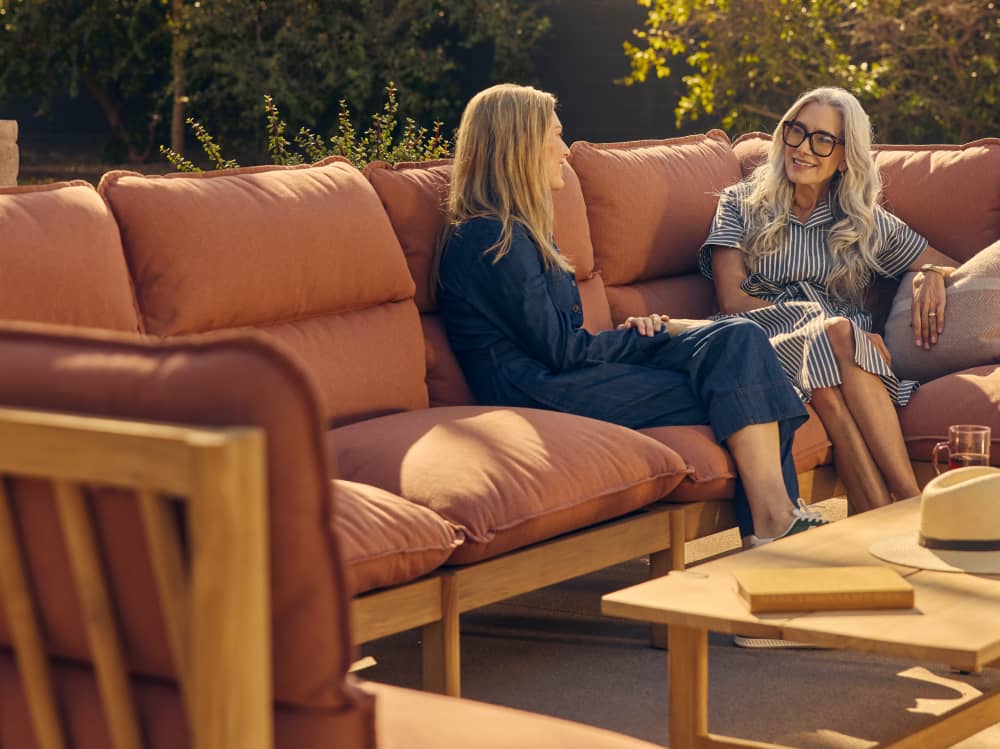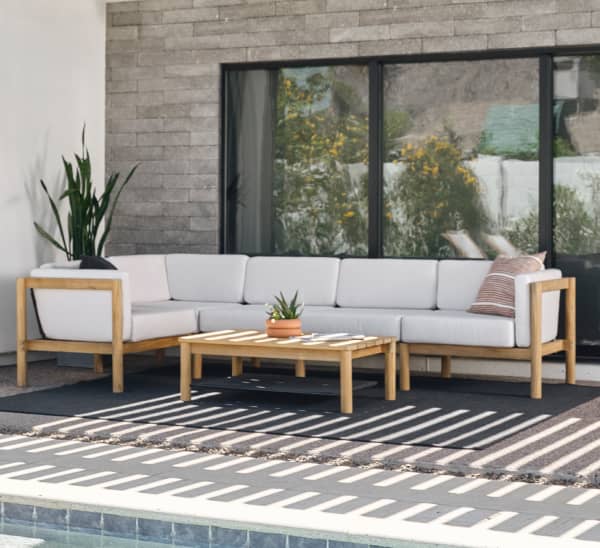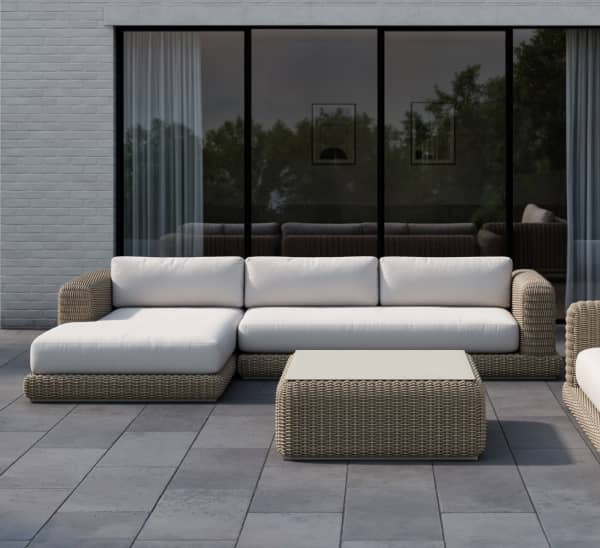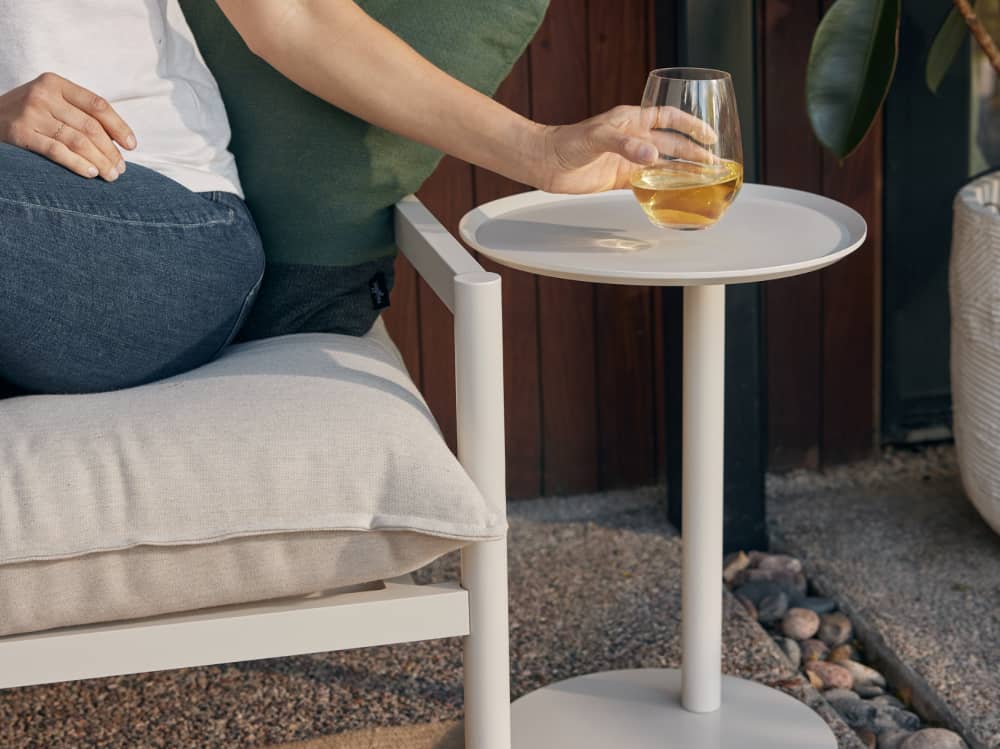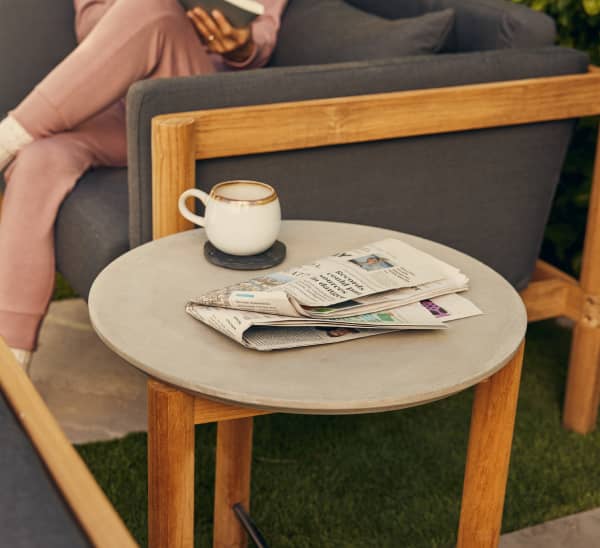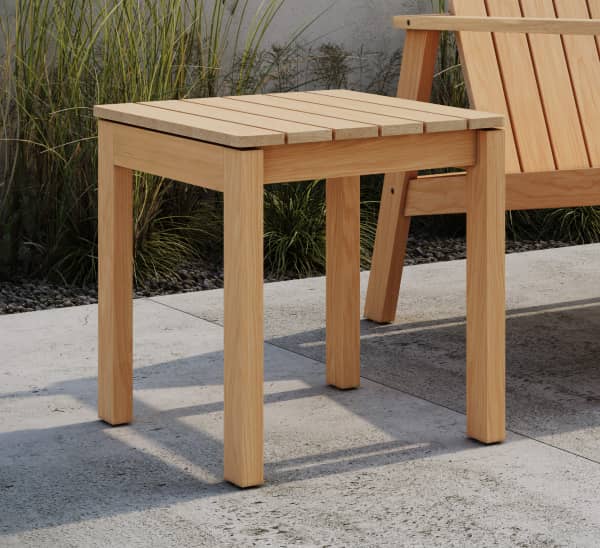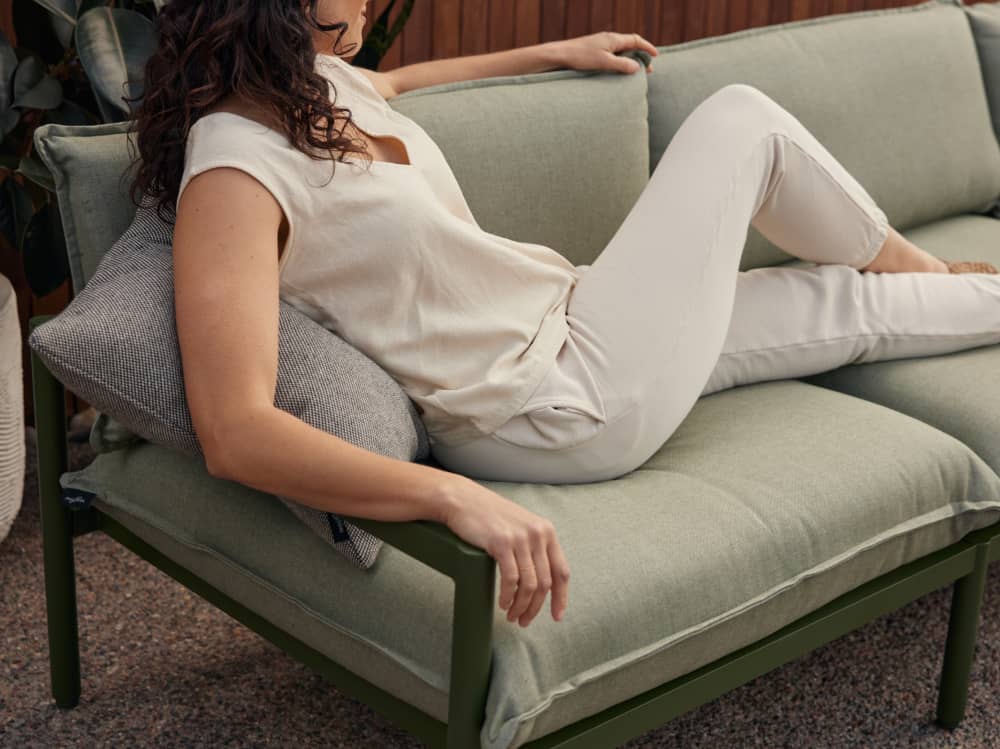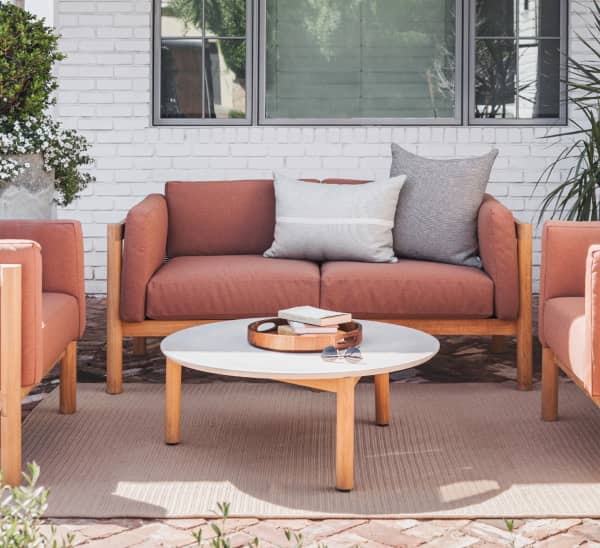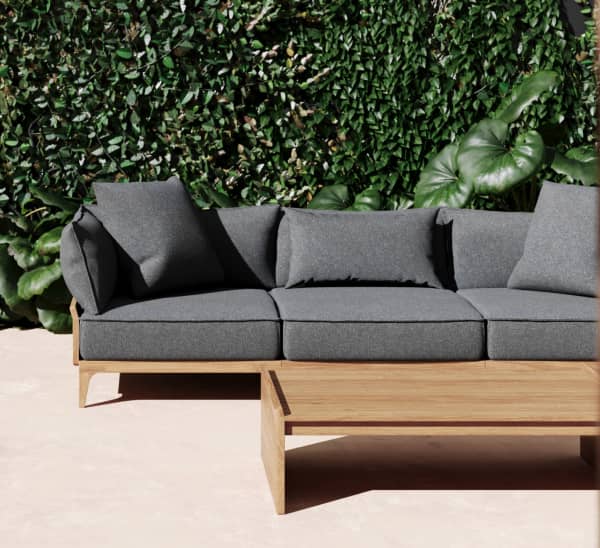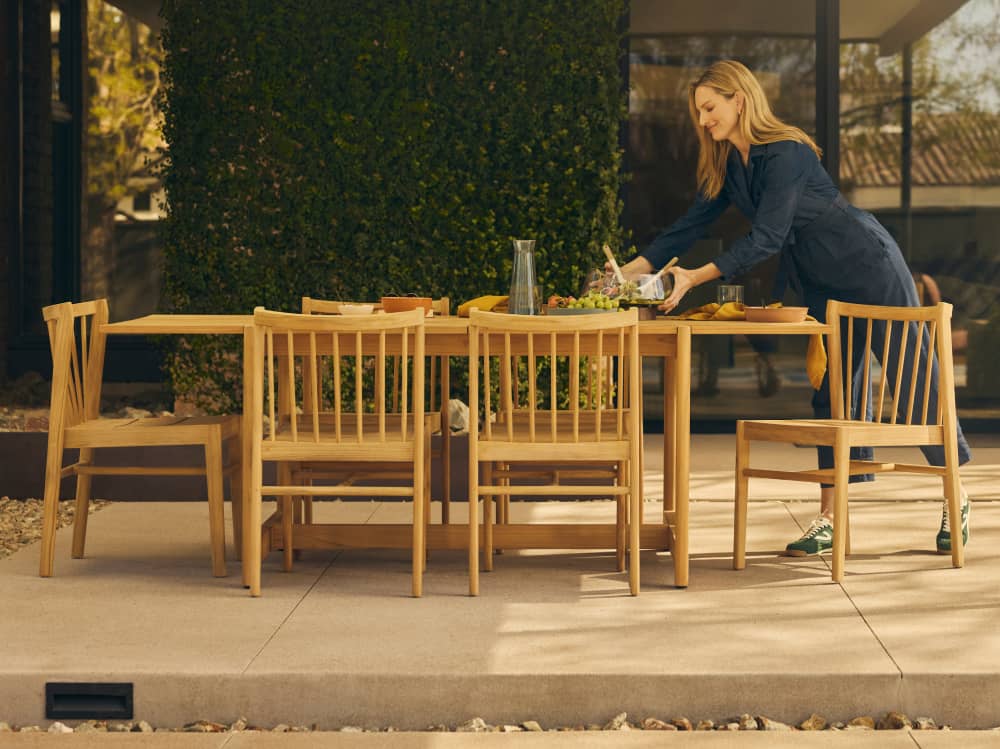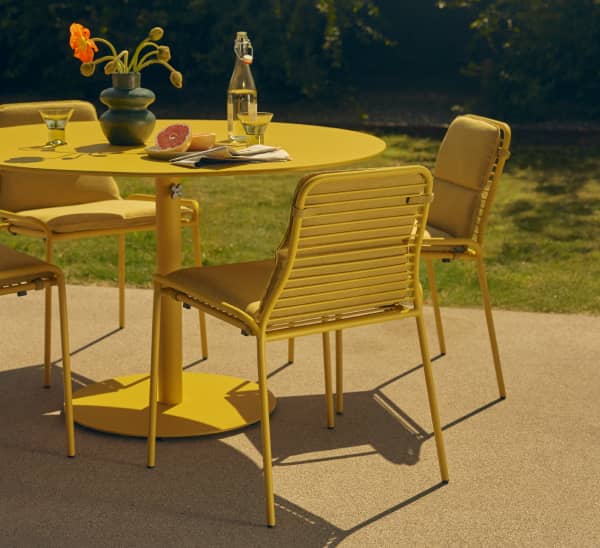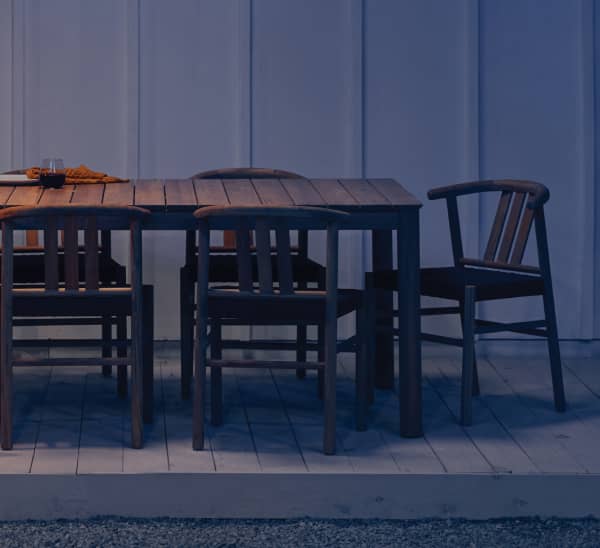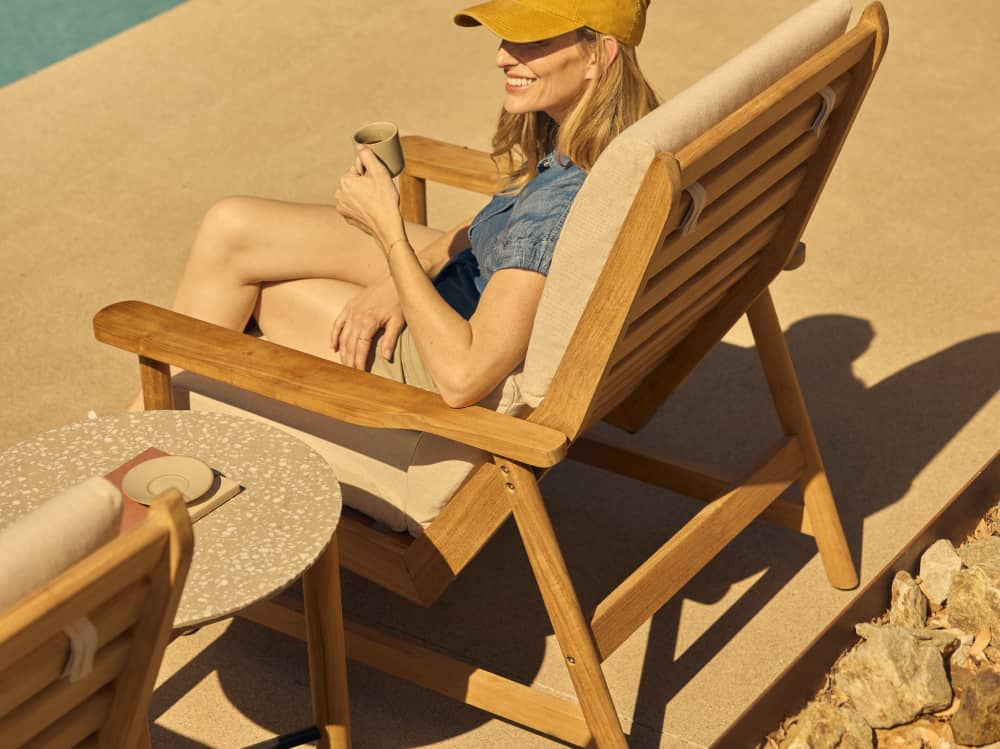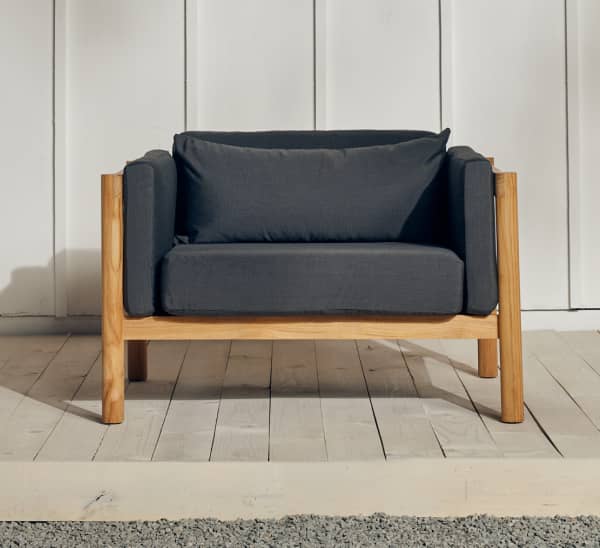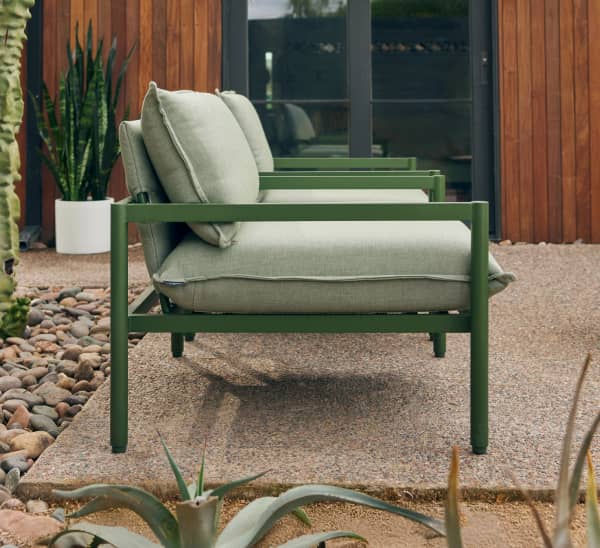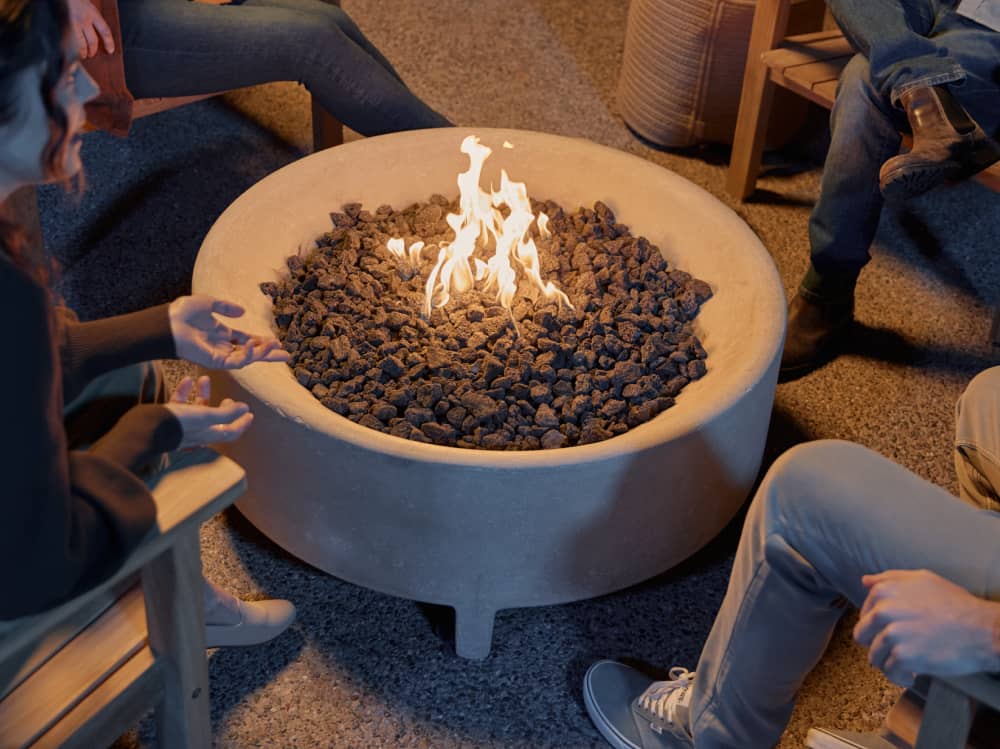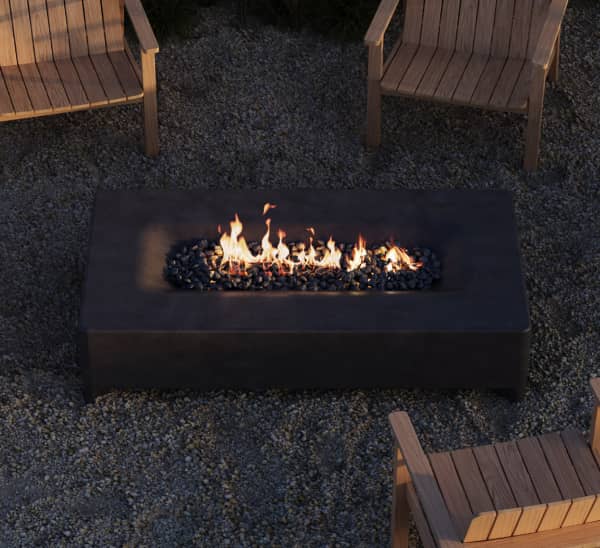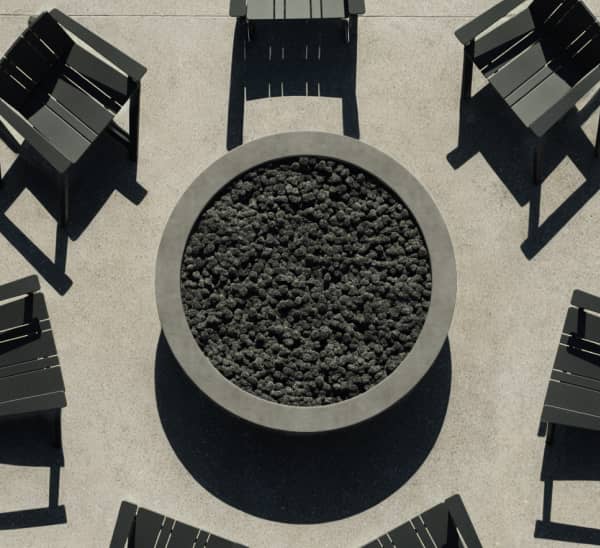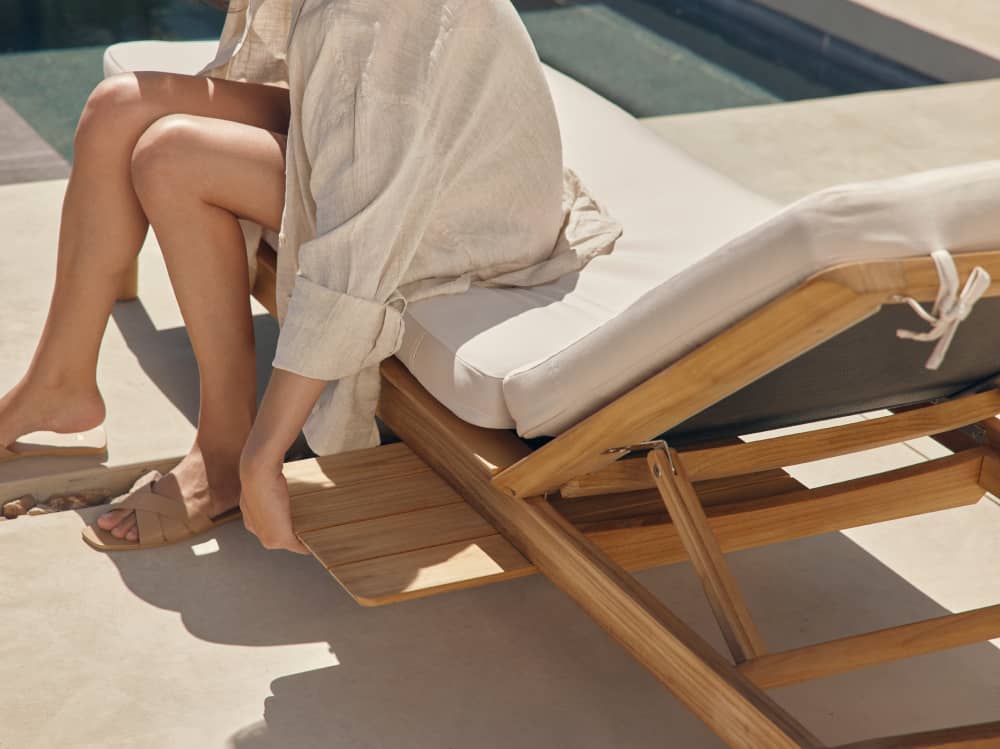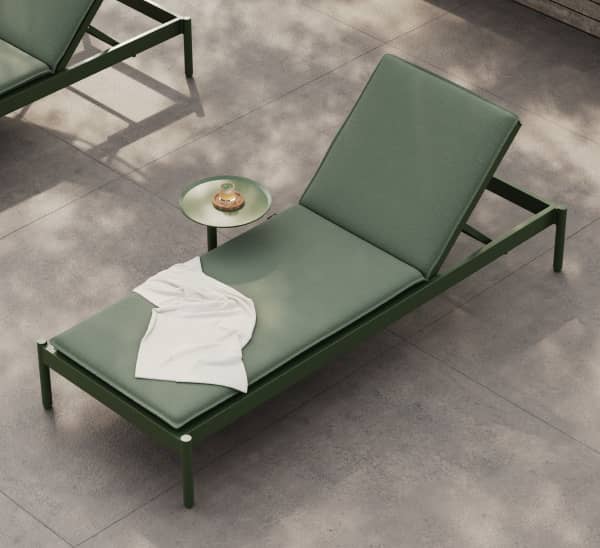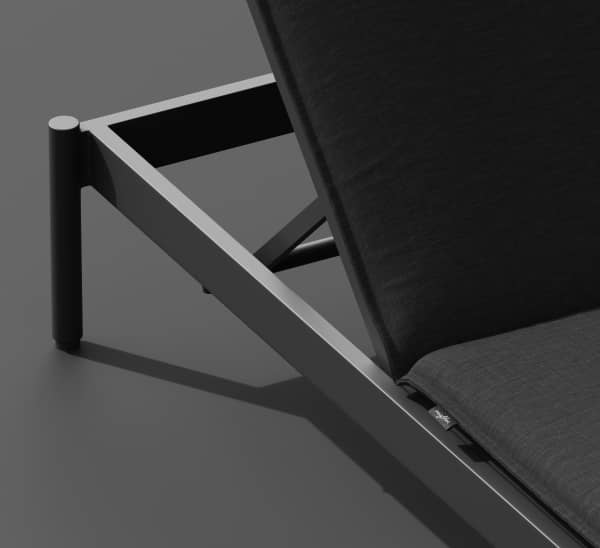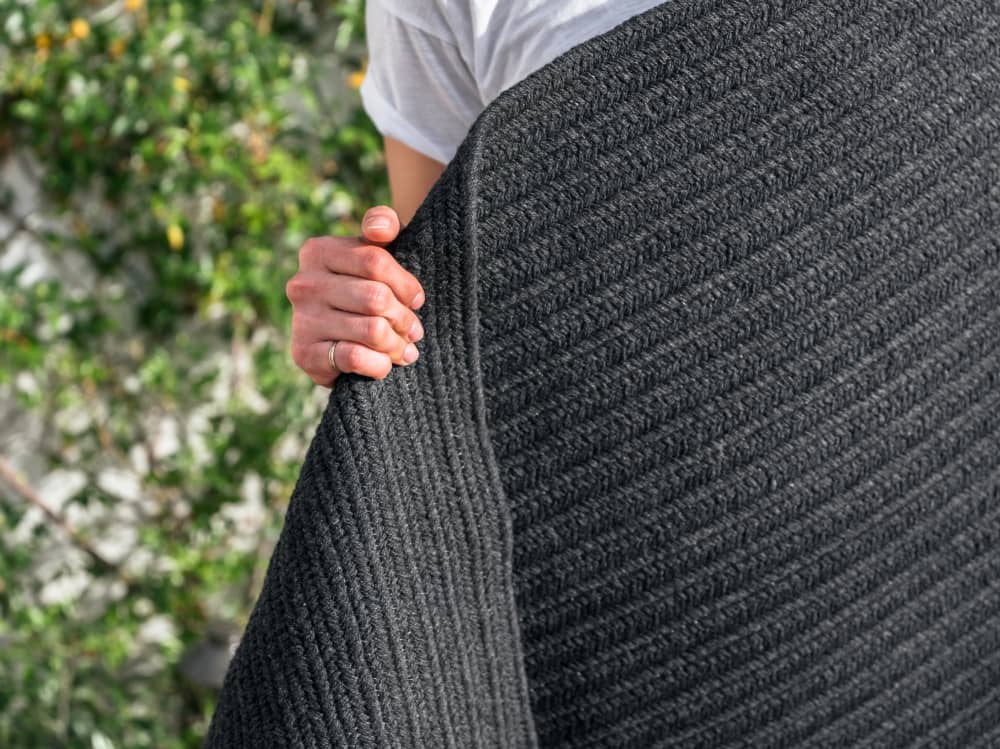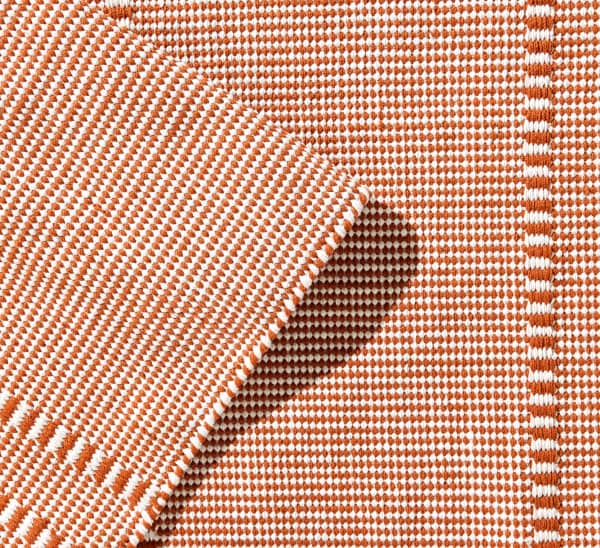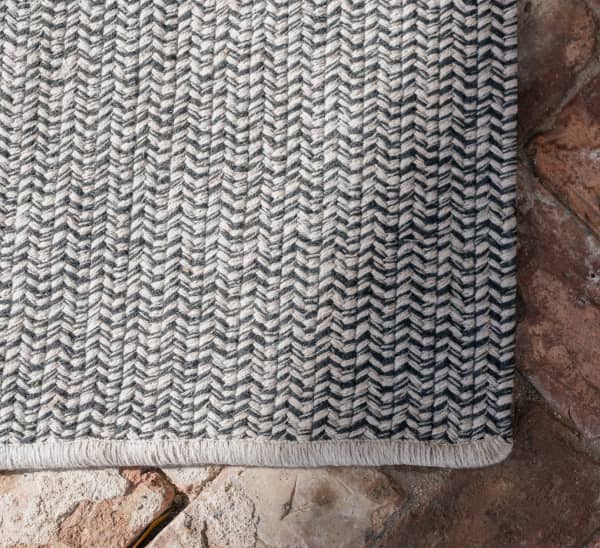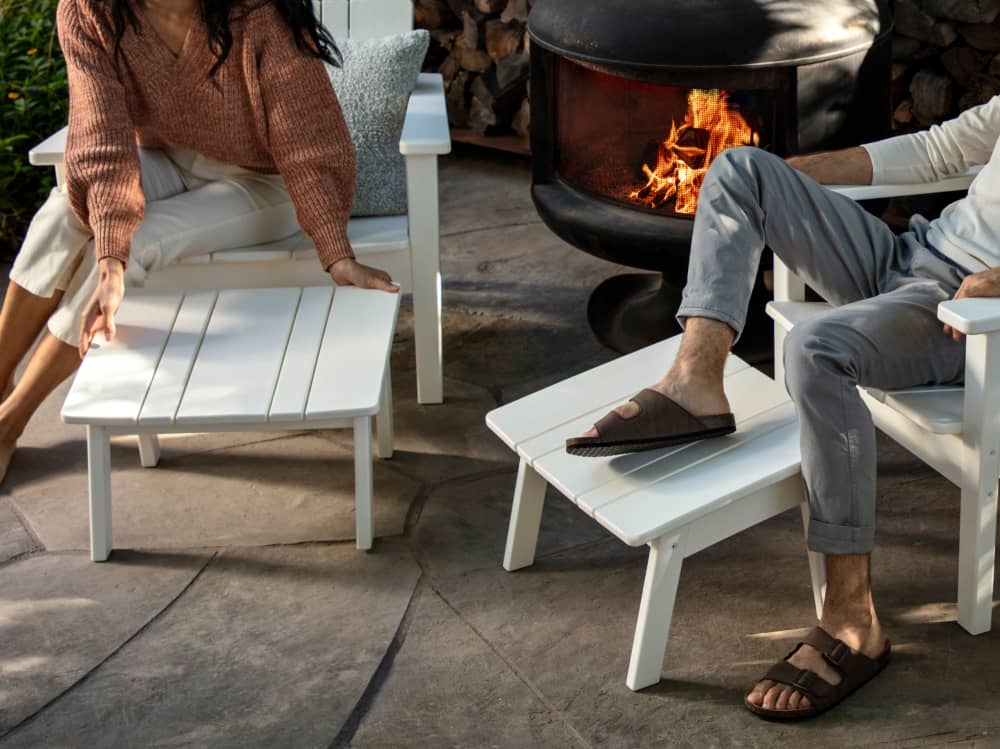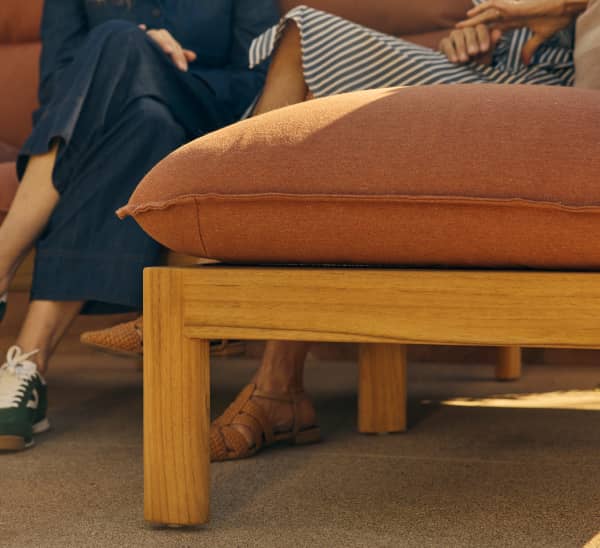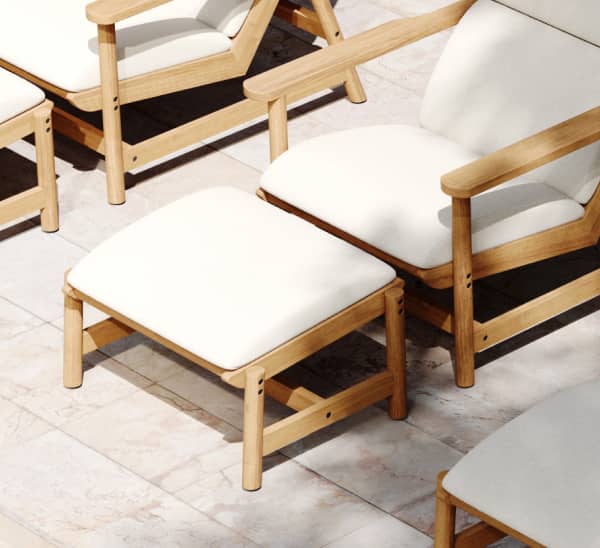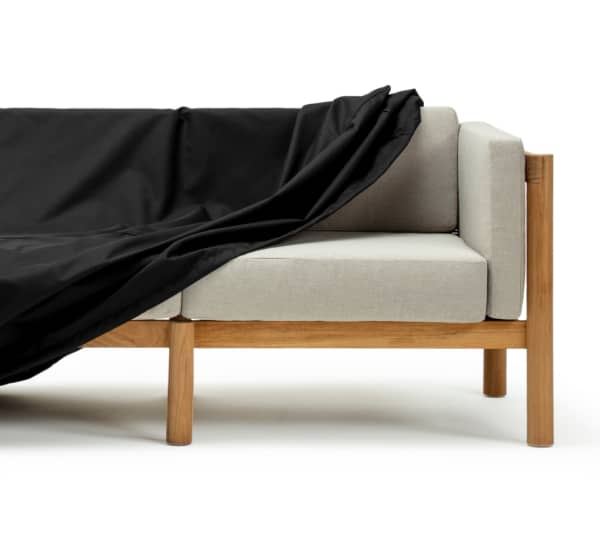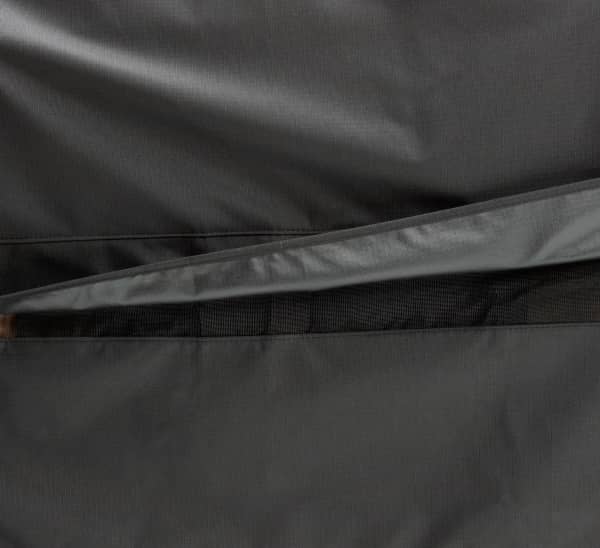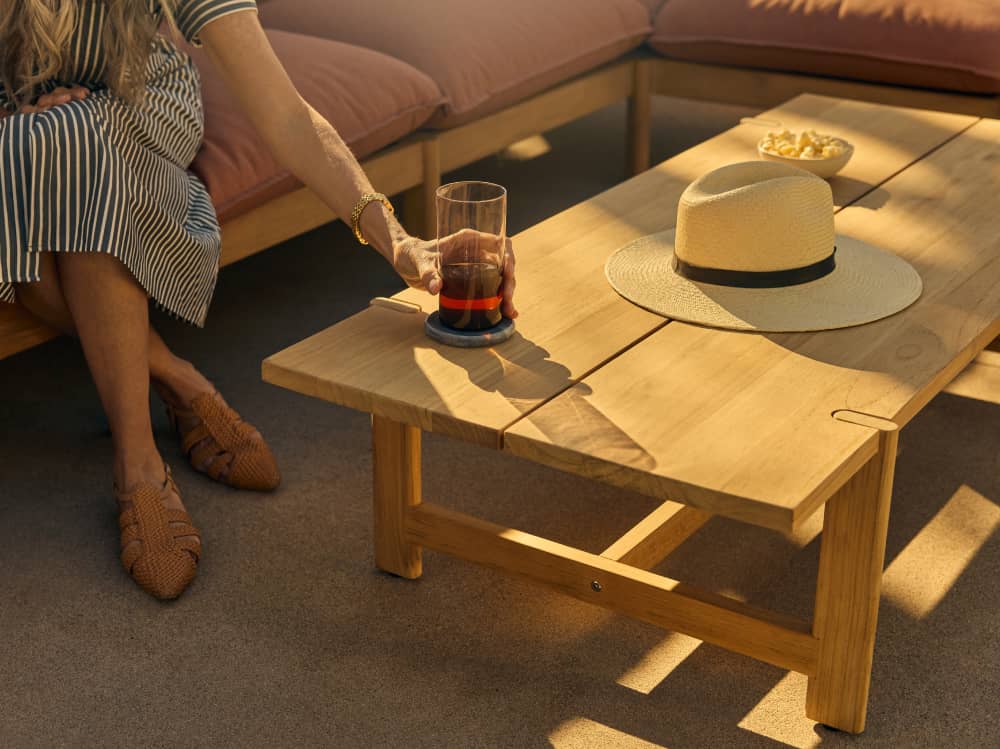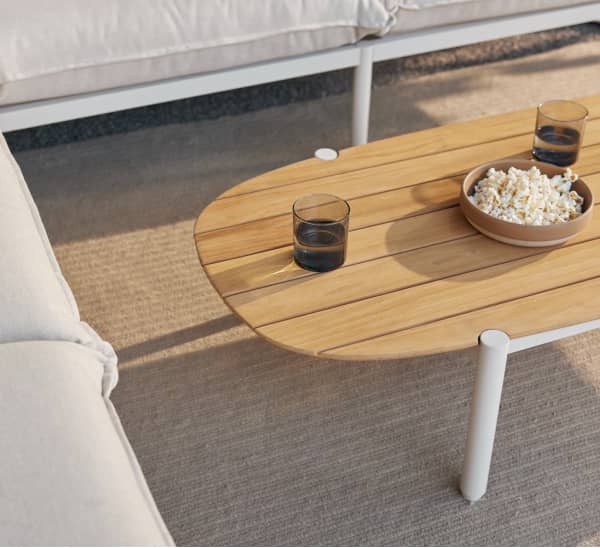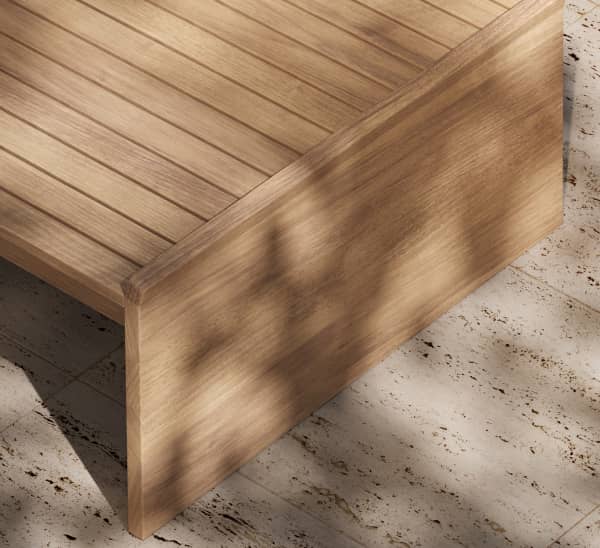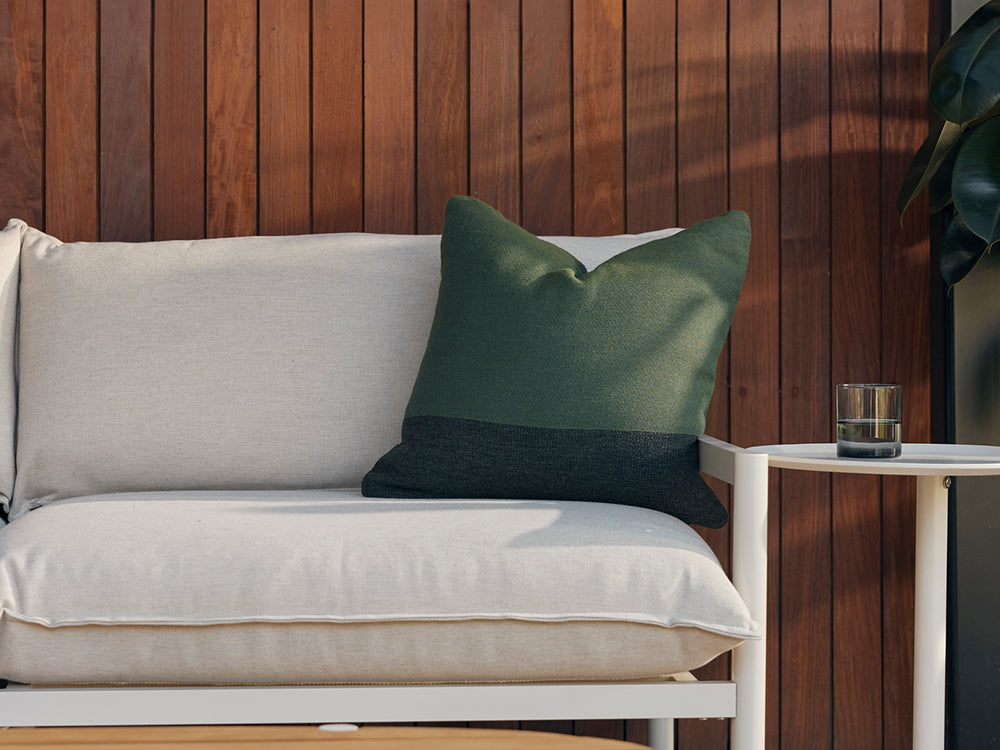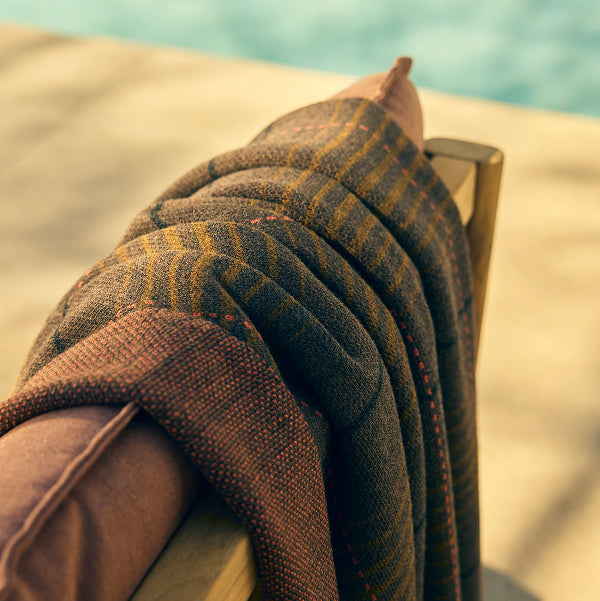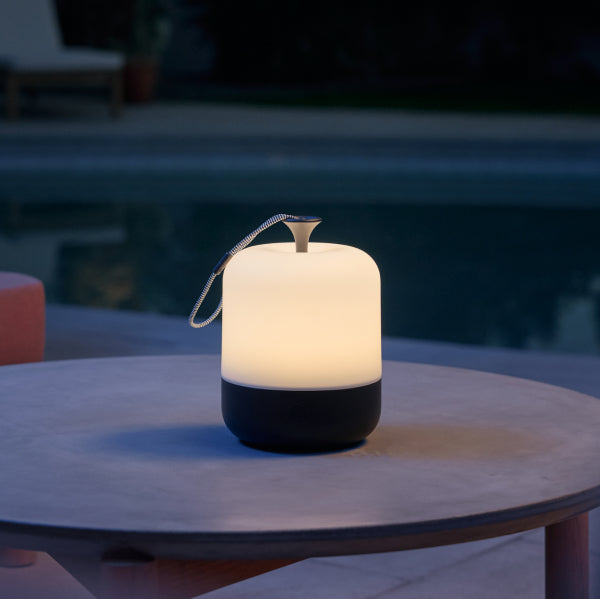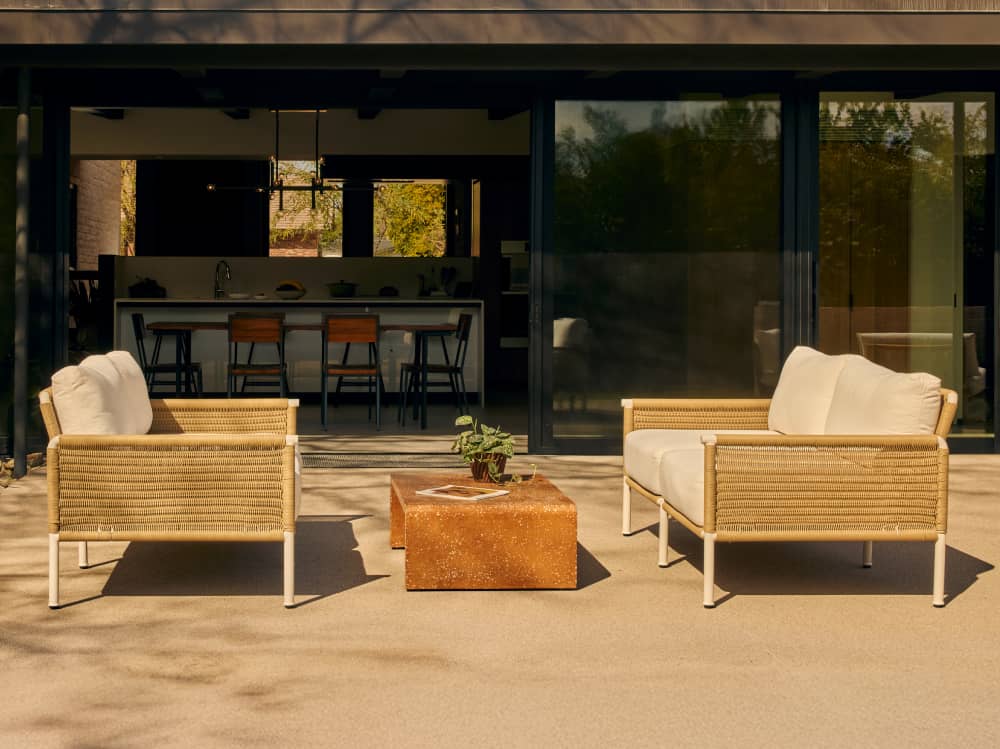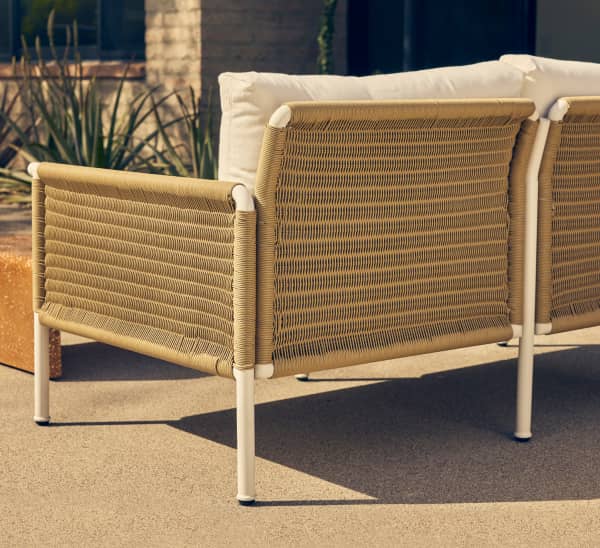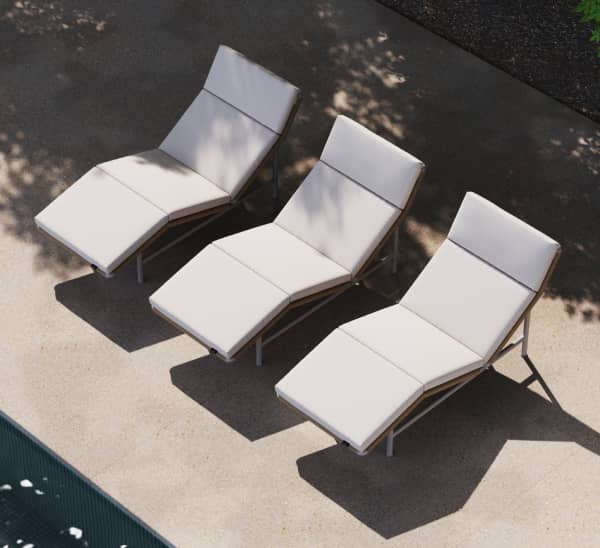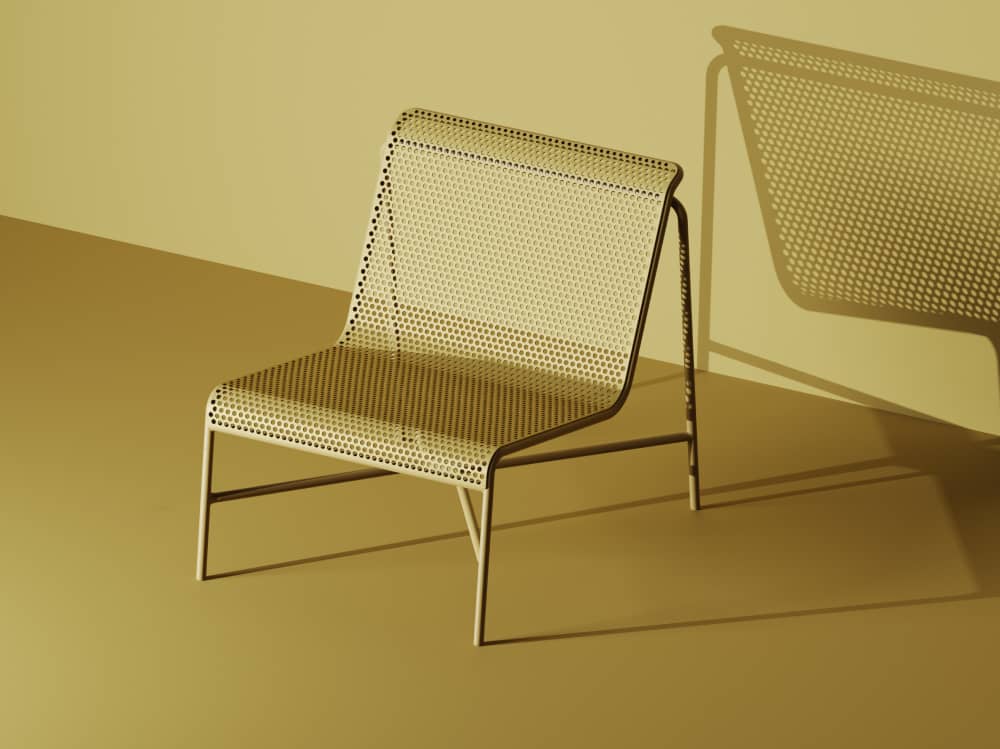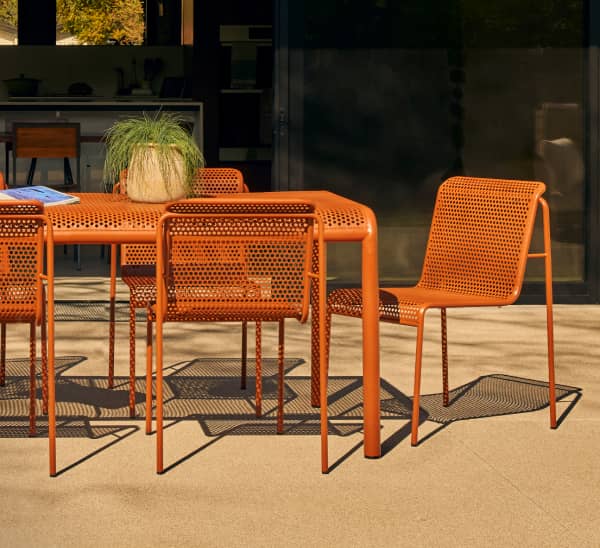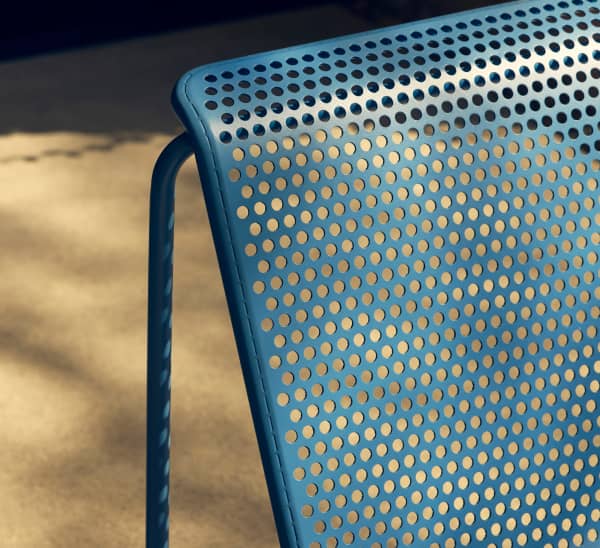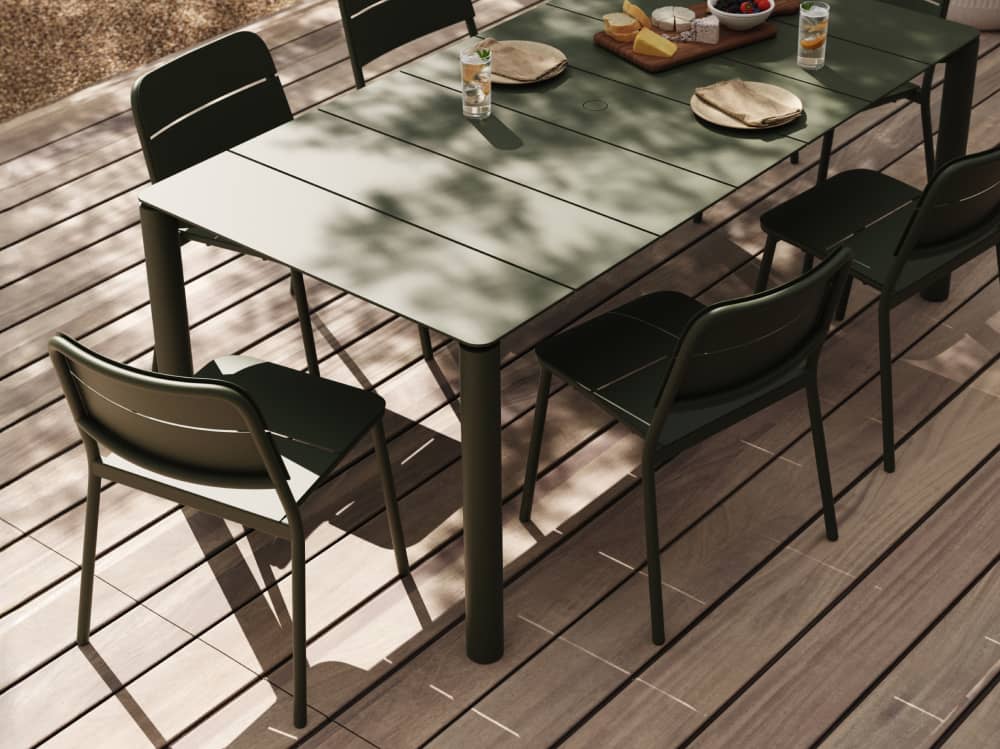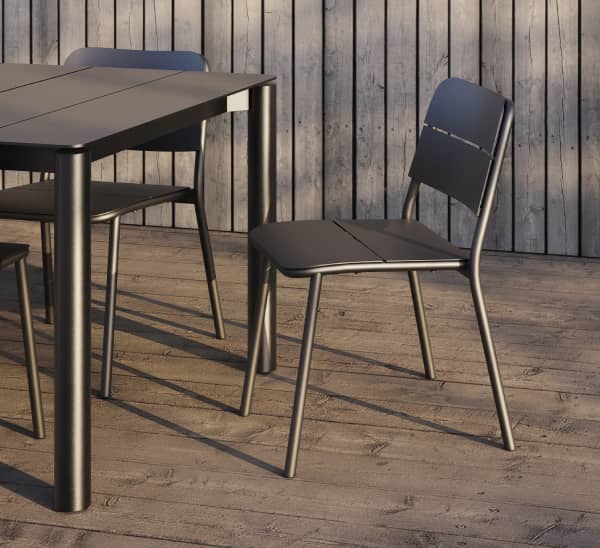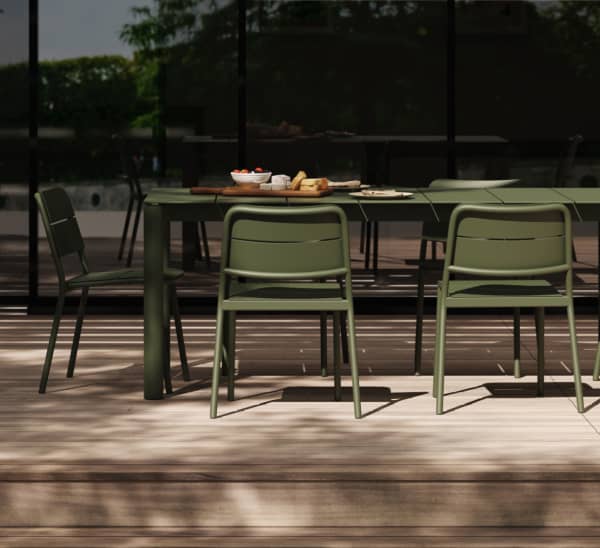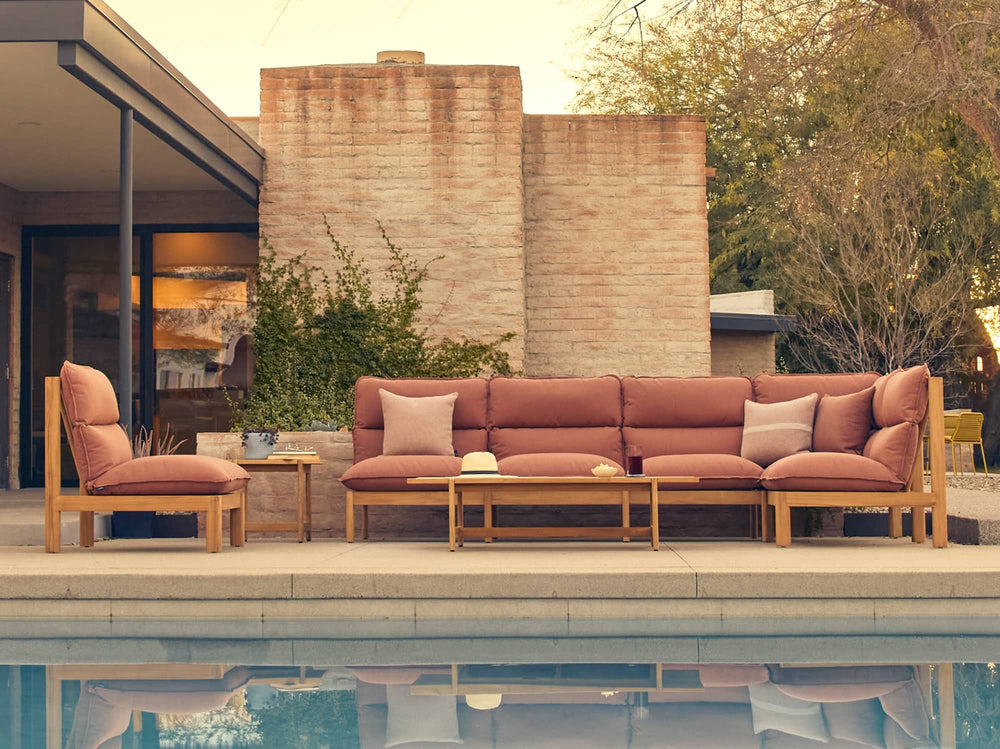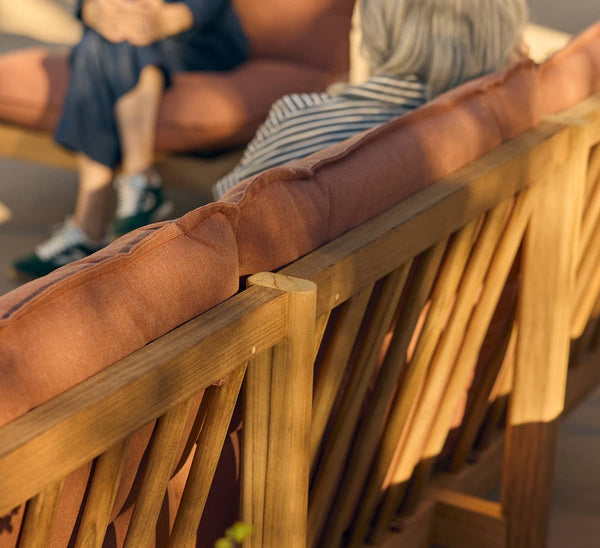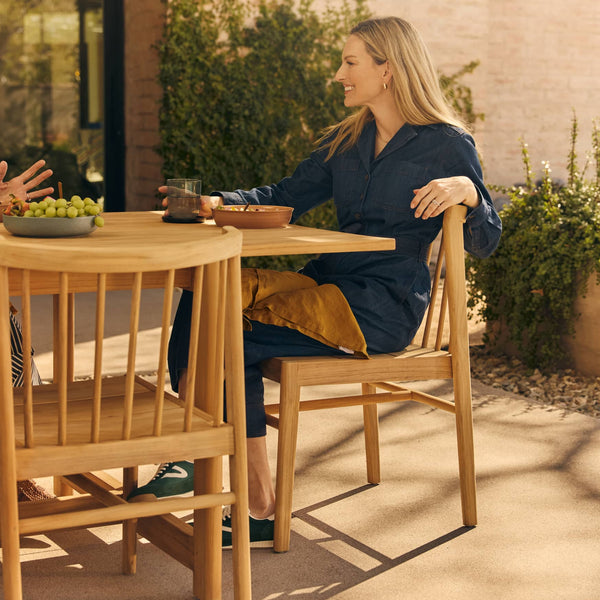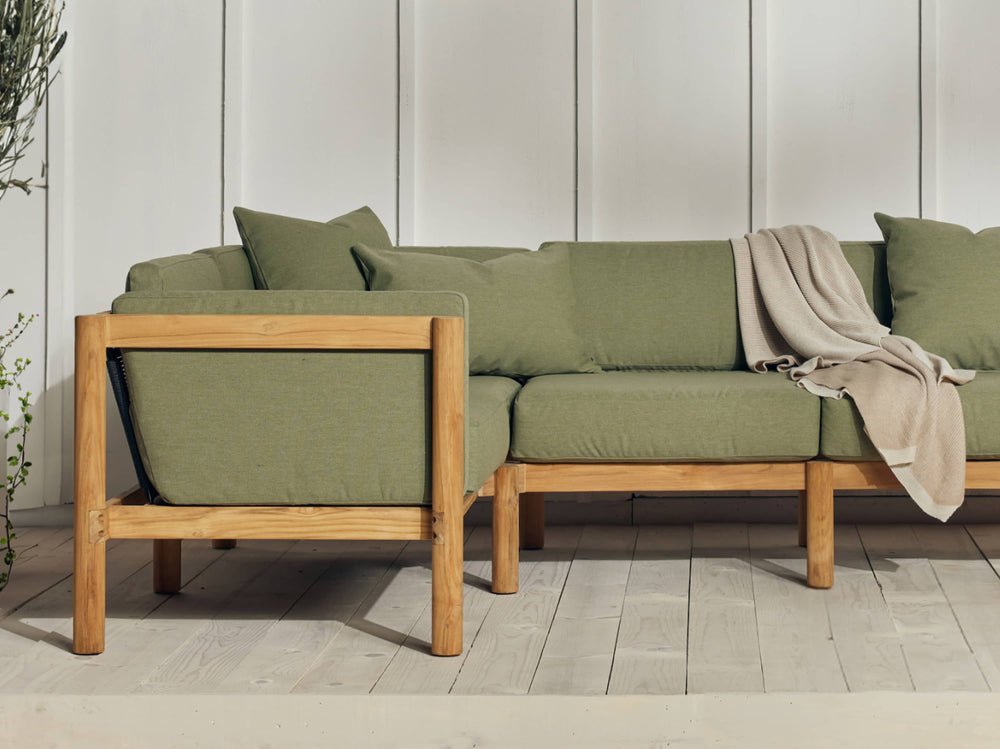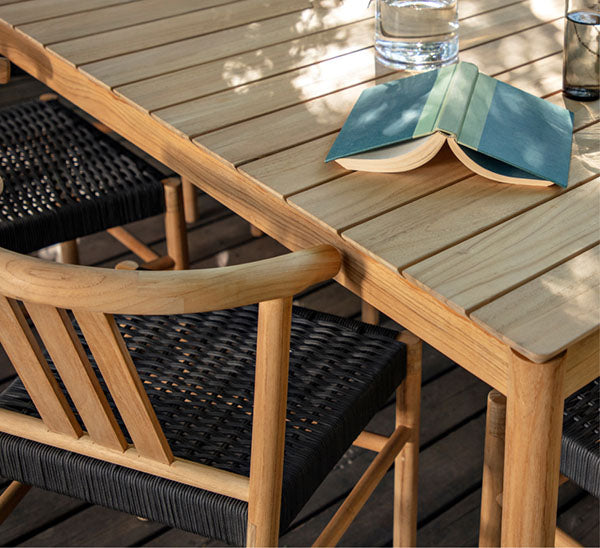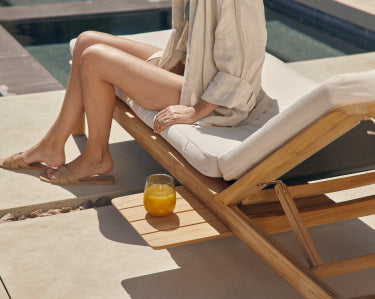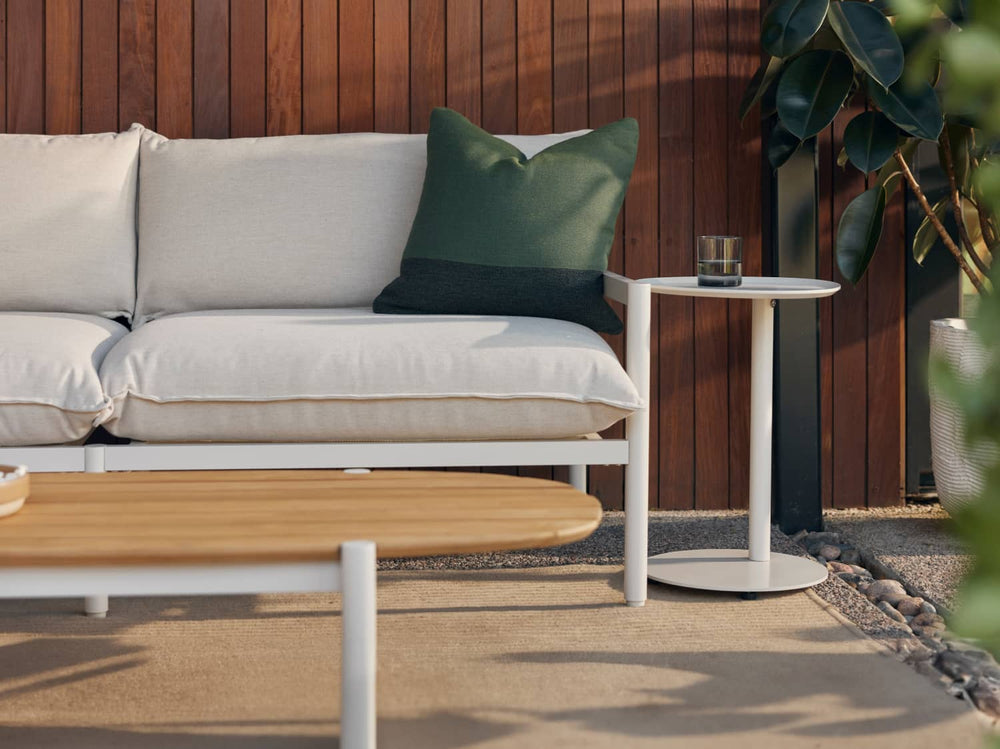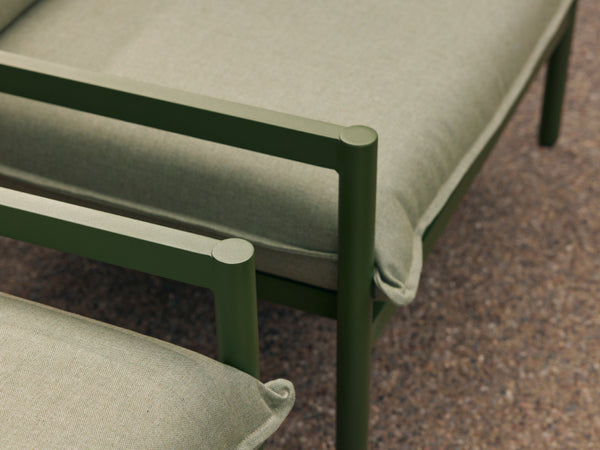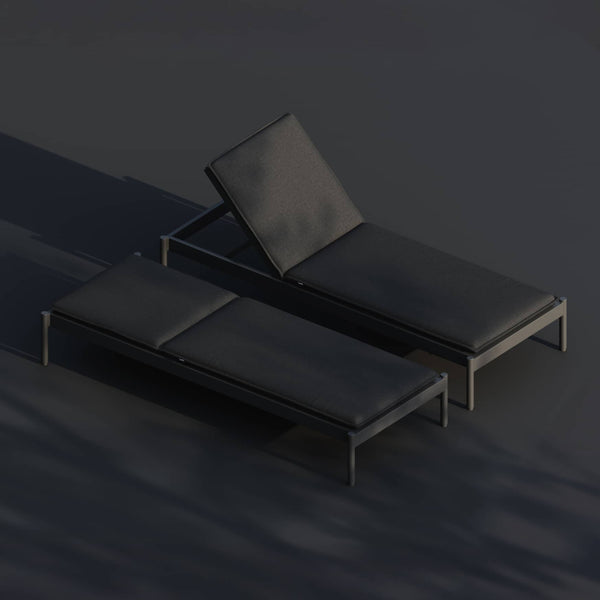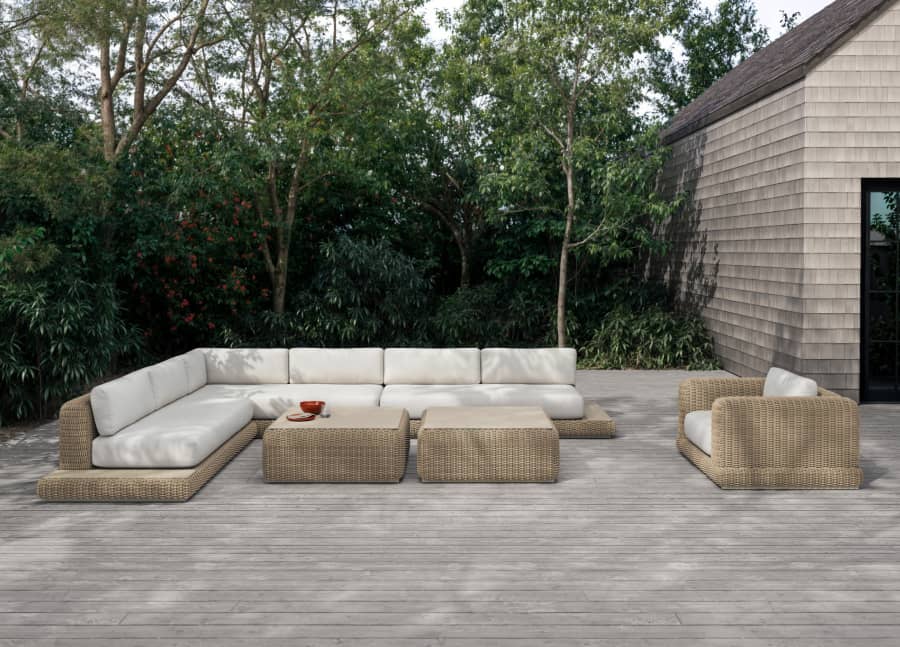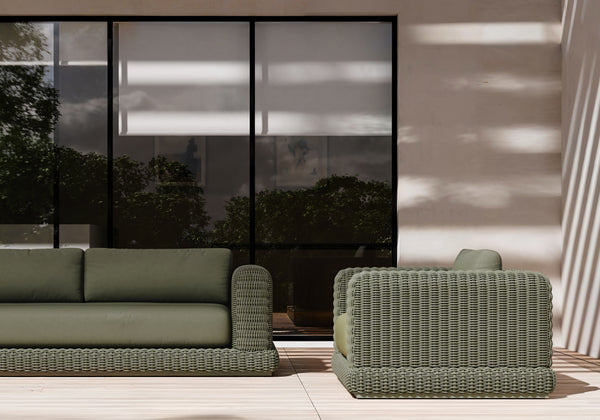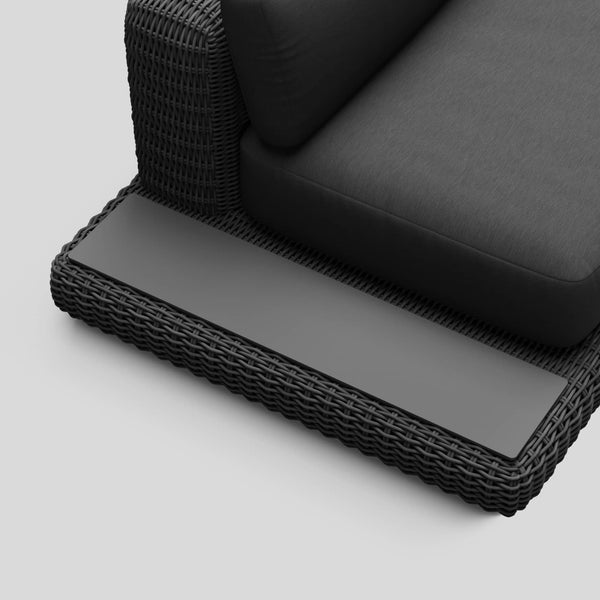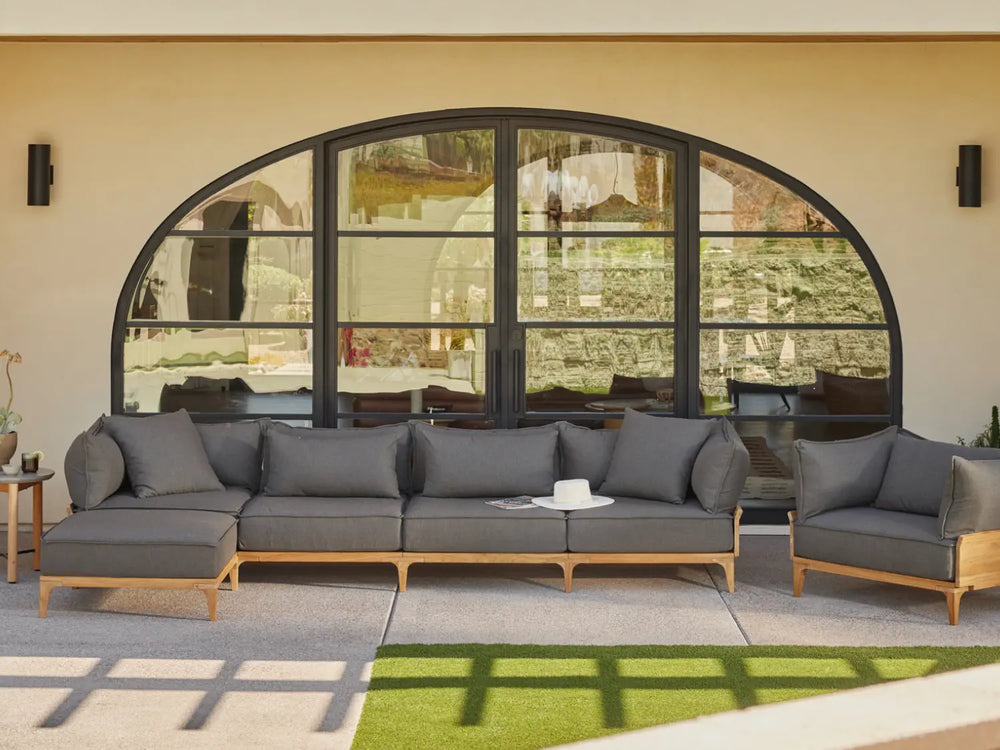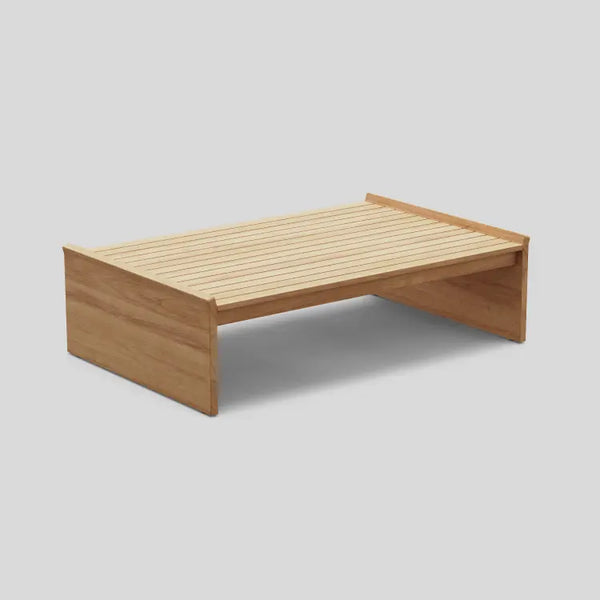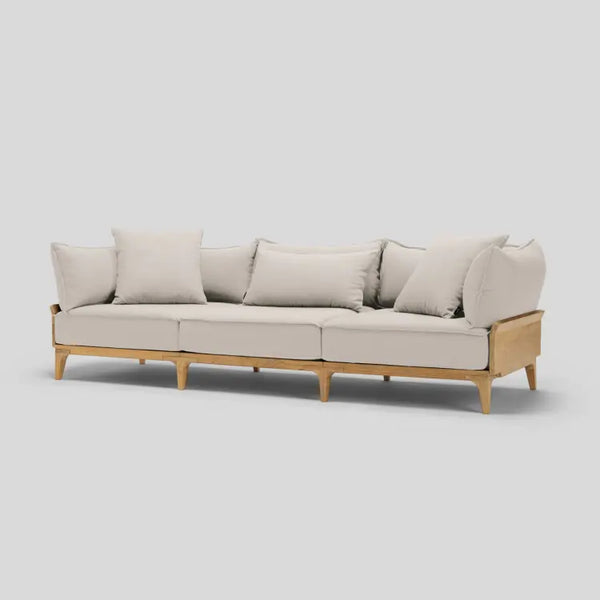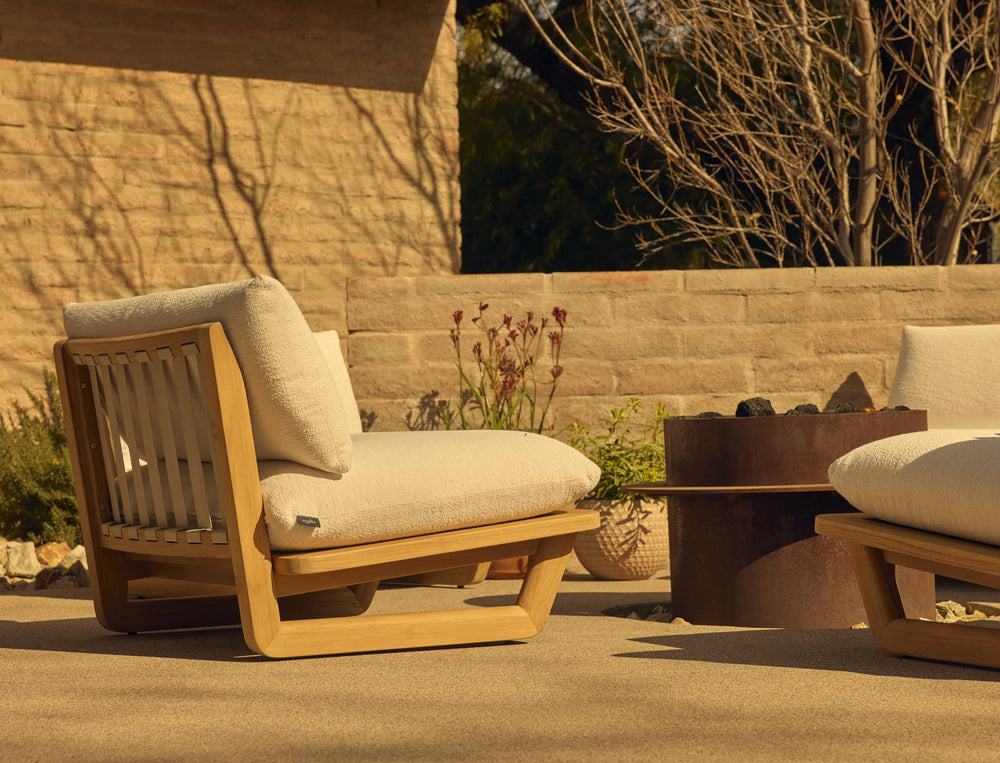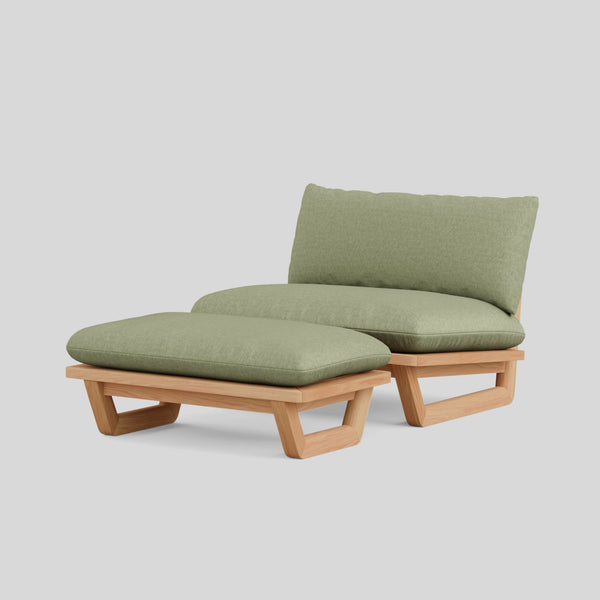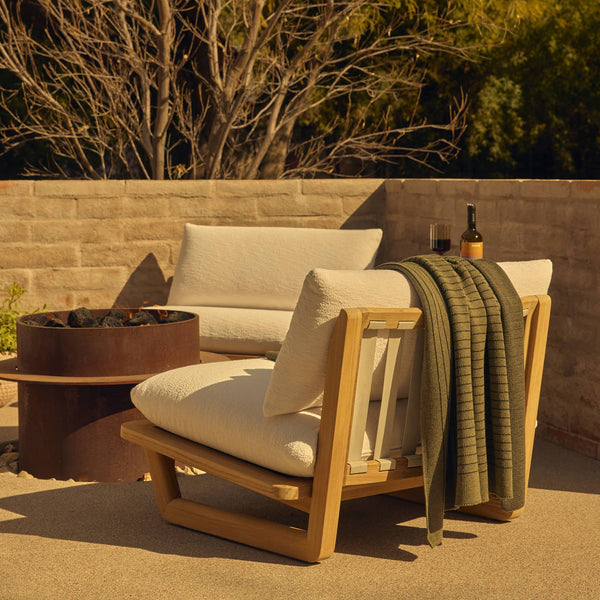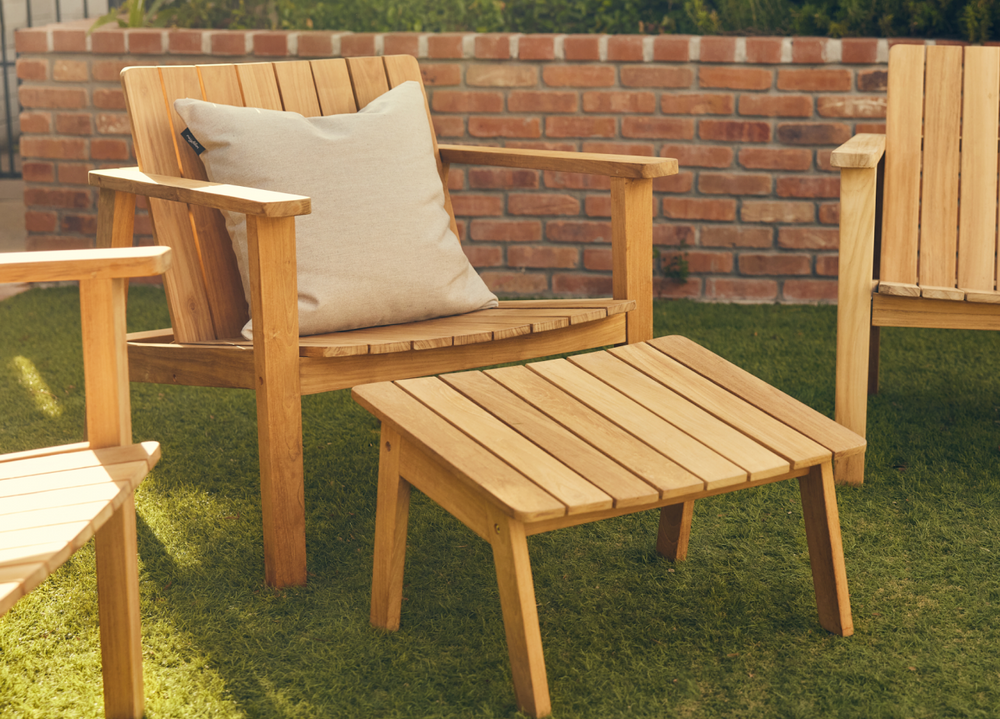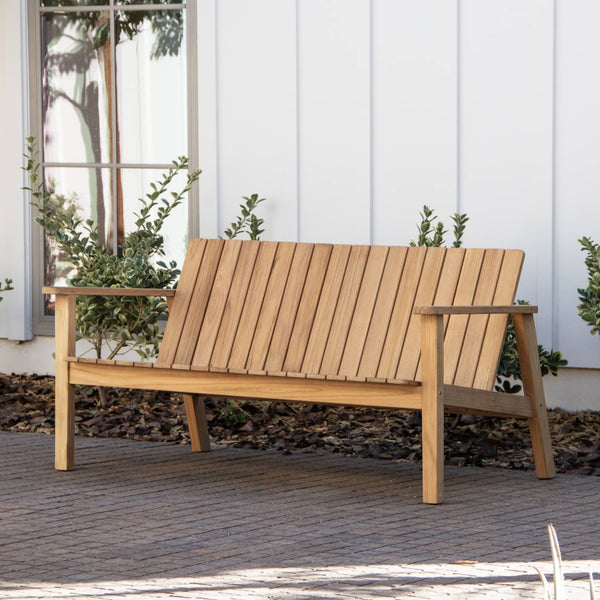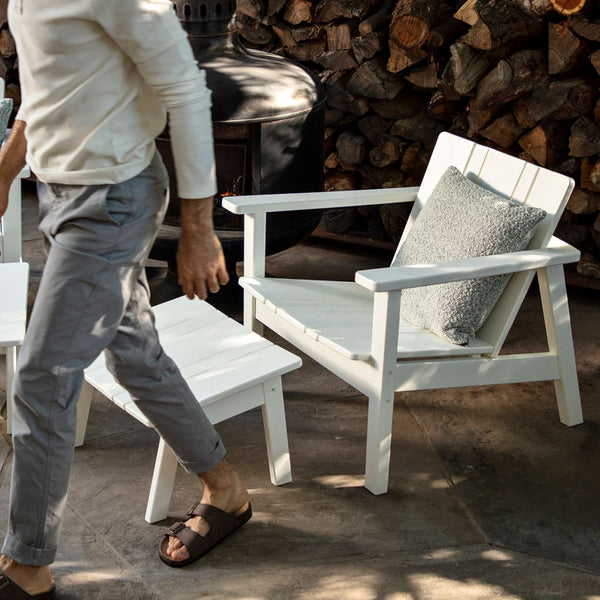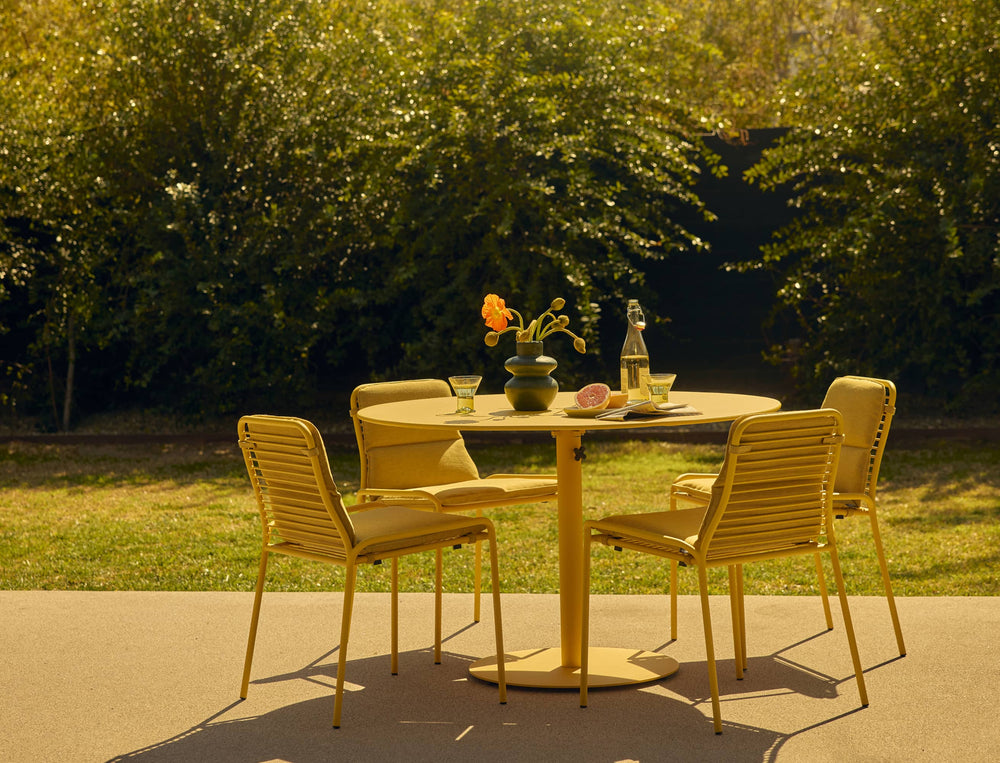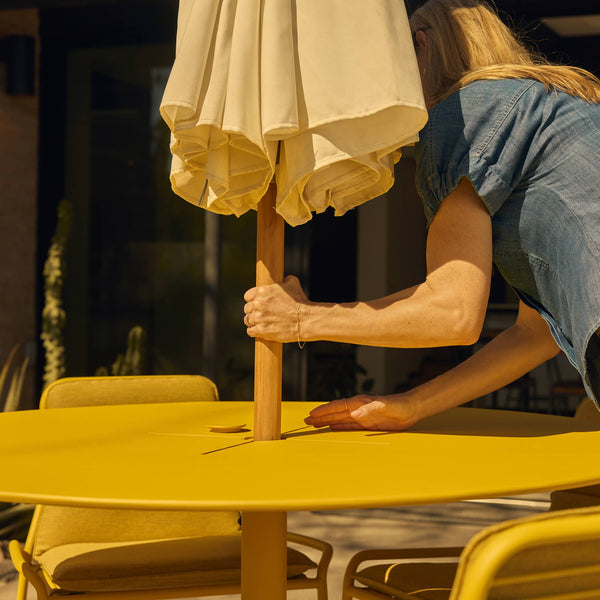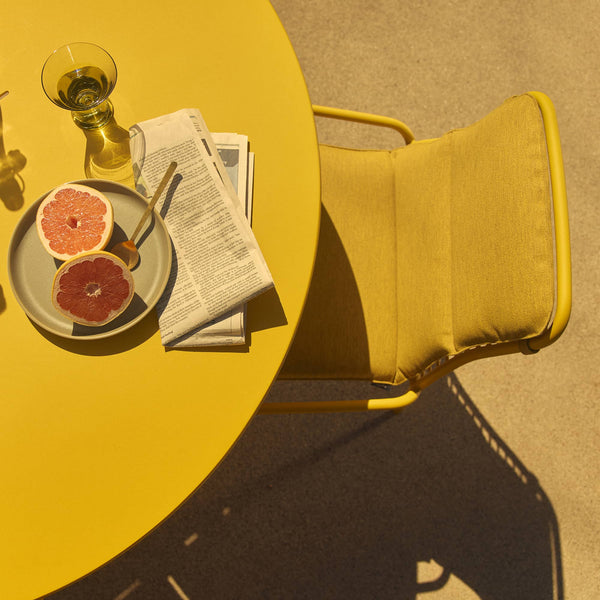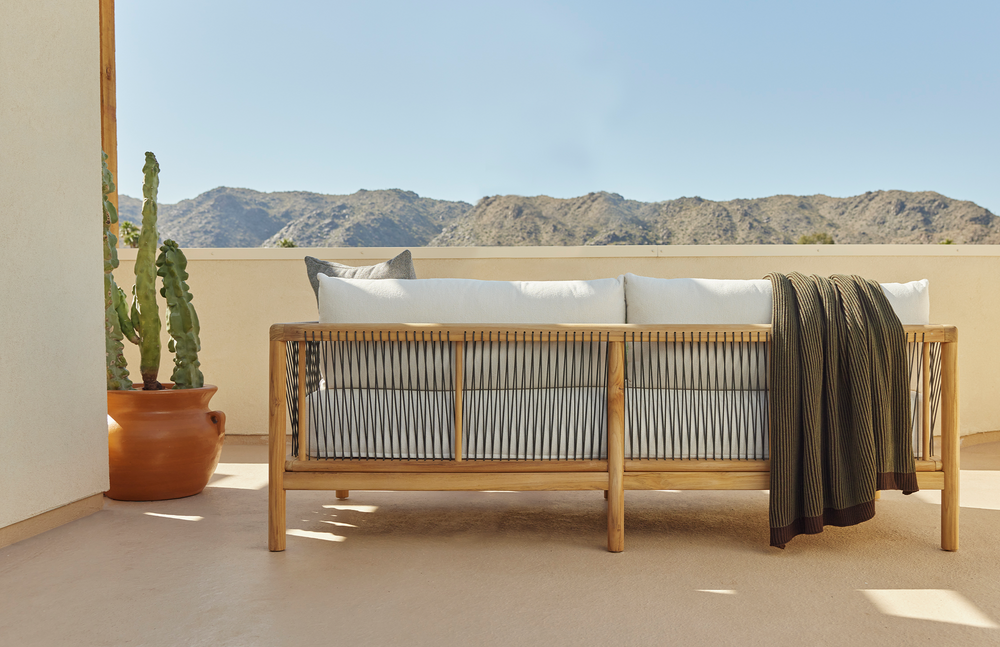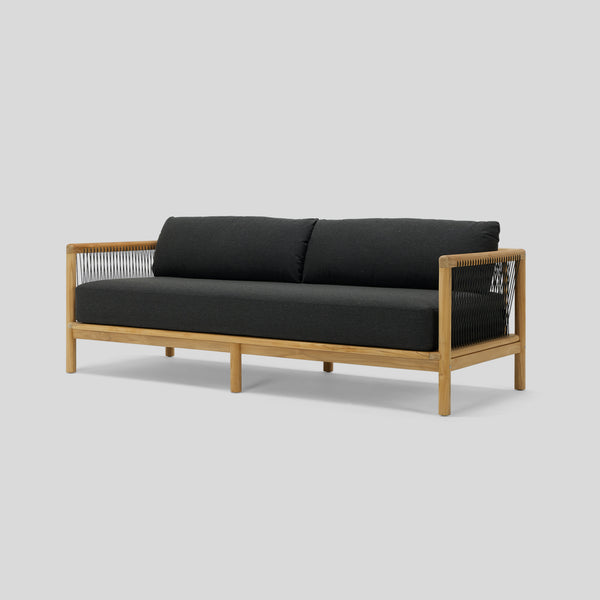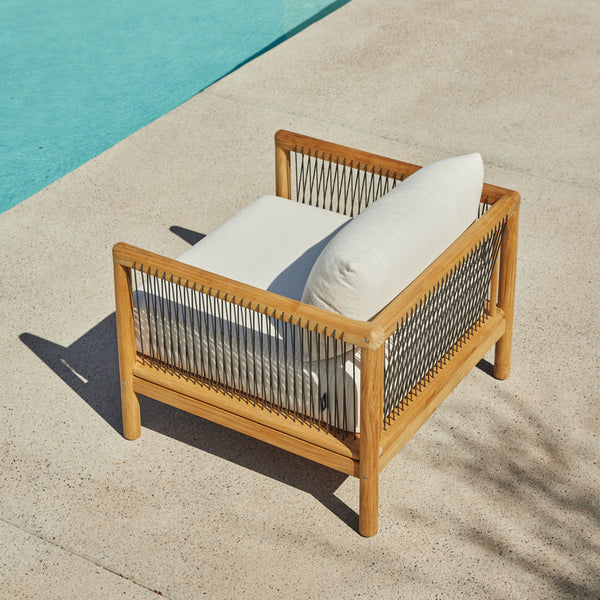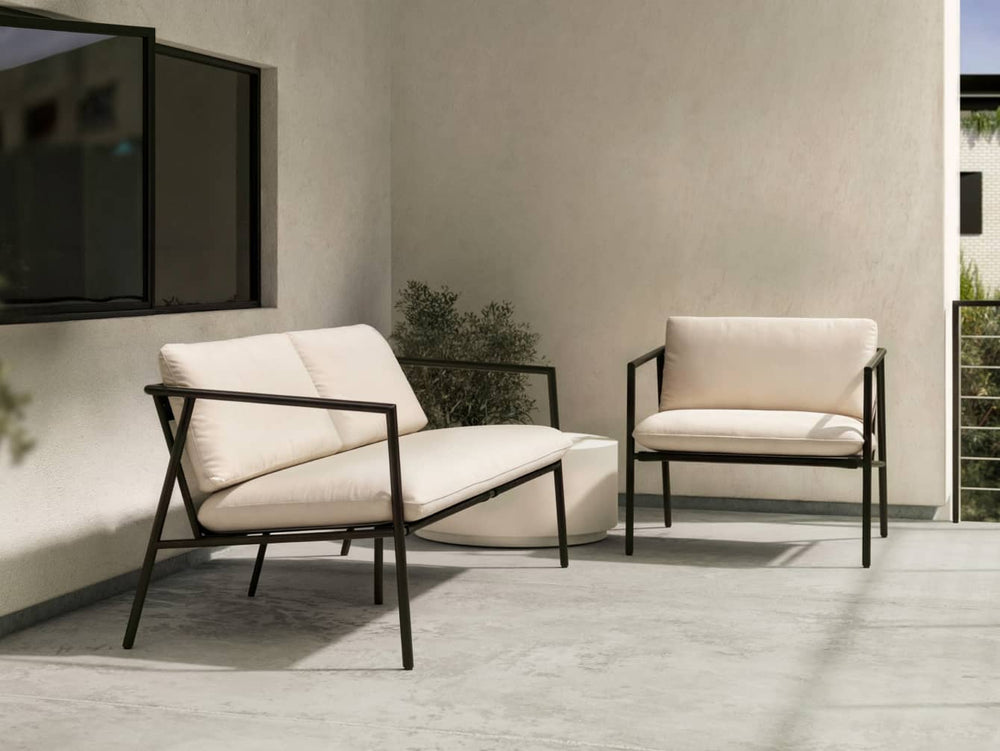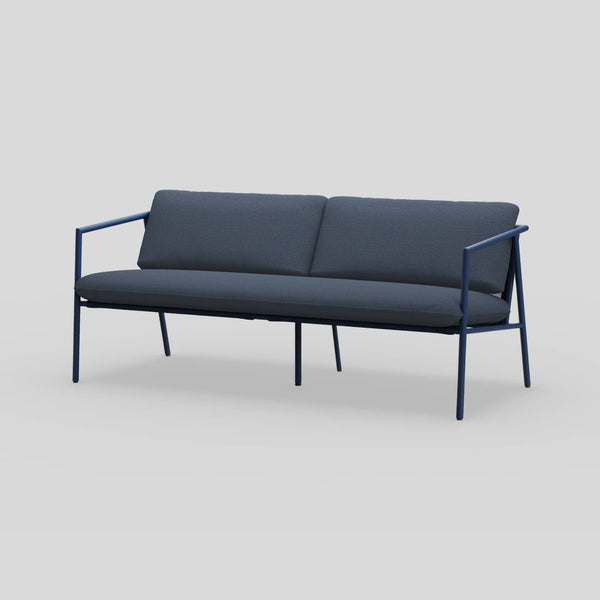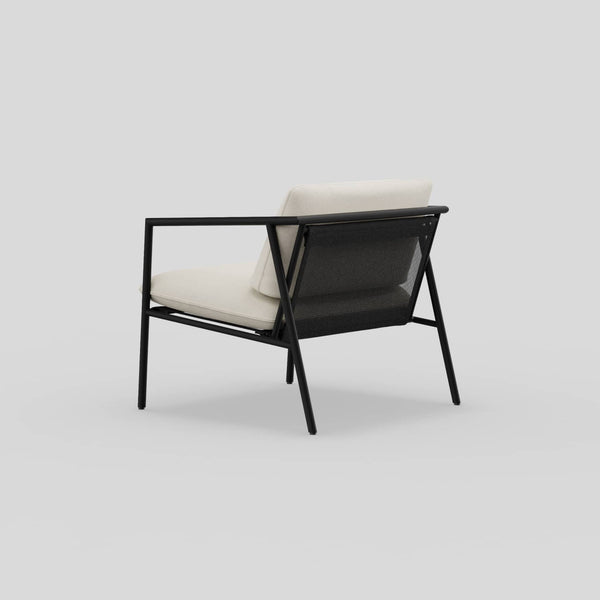How To Design The Perfect Patio
Written by Neighbor Editorial Team | @neighboroutdoor | Opens in a new window. |
We asked 100 design professionals their thoughts on designing the perfect patio, here's what we learned.

Here's what every perfect patio needs according to the experts
A thoughtful design is key to creating the perfect patio that maximizes the potential for how you can enjoy your space year-round. With the right design, your patio can be beautiful, functional and versatile enough to balance both entertainment and relaxation.
Ericka Violett, Principal Designer at Sill Design Co., says: “The perfect patio consists of comfortable furniture, somewhere to put out food, greenery, and different options to help control the temperature (i.e- things to add shade or heat depending on the season).”
From your flooring choices to your landscaping, entertainment amenities, and the furniture you lounge on, here are expert tips to elevate your outdoor space and design the perfect patio.
Deck and flooring
Decking or flooring is one of the elements that can make or break your outdoor space. Ideally, your patio flooring is stable, sturdy, weather-resistant and comfortable enough to walk barefoot on. Choosing the material for your patio floor or deck is an opportunity to express your style and extend your interior design to your outdoor space. Patio flooring also has the responsibility of grounding your outdoor furniture and creating a functional living space, so strength and durability are essential.
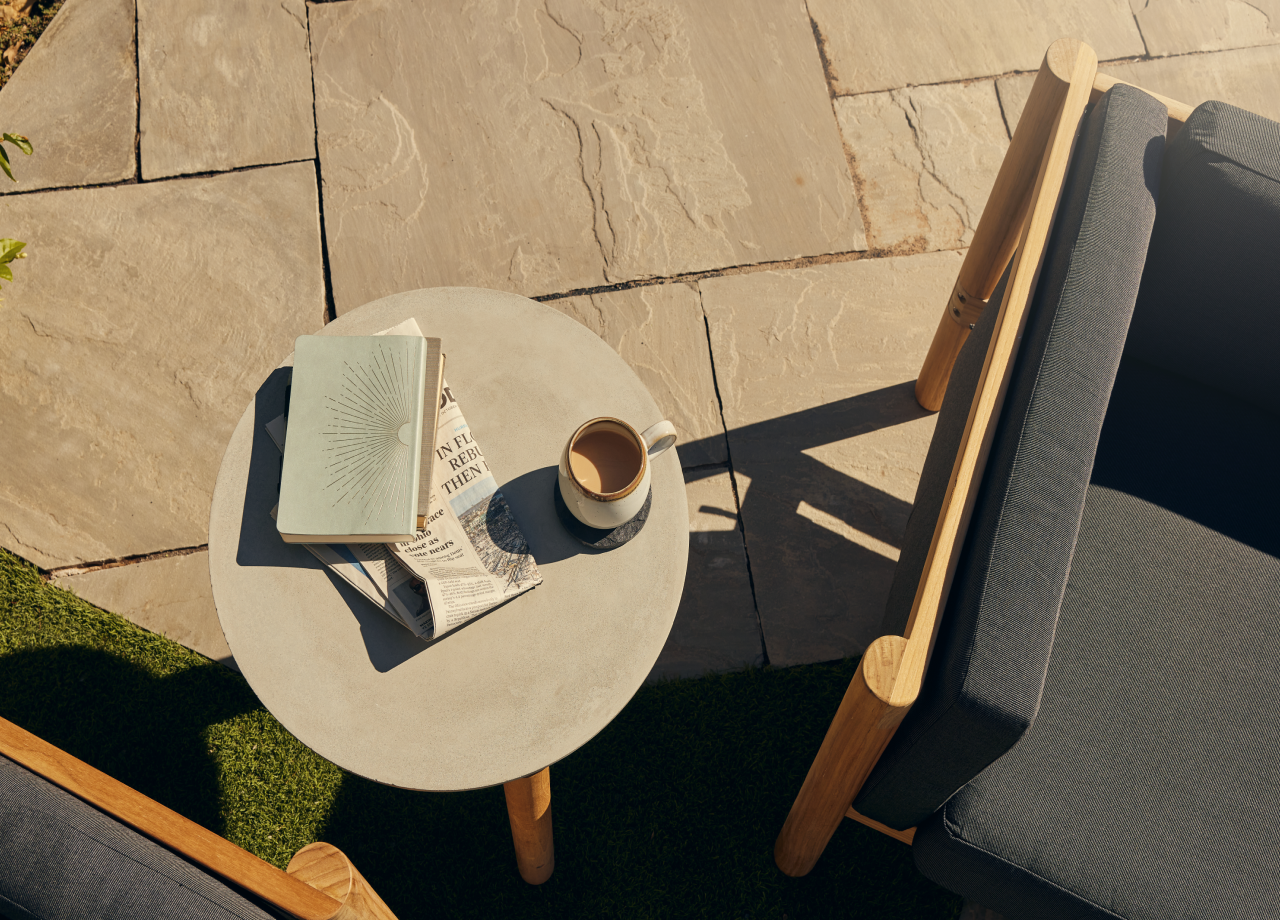
Stone vs. wood
Stones are an excellent choice in outdoor patio materials, due to their natural strength and ability to endure inclement weather. Natural stone brings elegance and warmth to a space and is low maintenance once installed. Popular outdoor stones include granite, marble, limestone, flagstone and slate. However, it’s a good idea to explore locally-available stones as these can be more cost-effective than imported stones and complement your natural outdoor surroundings nicely. Patio pavers, such as concrete pavers, are popular choices when designing for a modern aesthetic. Concrete pavers can last upwards of 50 to 100 years if properly installed.
Wood is also an excellent hardscape flooring material that adds a modern, natural touch to a space. Certain woods, like teak wood, ipe wood and western red cedar, naturally repel moisture, resist wood rot and insects, and withstand heat, making them ideal materials for an outdoor deck or patio exposed to the elements. Though you’ll need to commit to periodic cleaning and maintenance, like applying protective sealers and cleaning solutions to maximize the life of your deck, there is nothing that looks and feels quite as nice as wood. Real wood flooring materials can vary in price, with teak wood, ipe wood and cedar on the more expensive end of the spectrum, and treated pine and spruce wood on the cheaper end.
Cost-effective wood vs. high-end wood
While the more cost-effective woods are generally more accessible than higher-end woods, cost-effective woods can be prone to warping, shrinking and infestation by pests. Studies by the USDA AgResearch Magazine have shown that termites find pine wood and spruce wood to be the ‘most palatable’, while teak wood was the least palatable. Splurging on quality woods like teak wood or ipe wood can ensure that your deck lasts for 20 to 30 years with proper care, while maintaining its original strength and beauty.
What the experts say

According to our survey, most designers preferred natural stone and wood for style and durability. (34% stone; 20% wood) Natural stones and certain woods (like teak and ipe wood) are long-lasting, soft and welcoming for bare feet, and pair nicely with modern outdoor furniture.

69% of designers say it’s worth splurging on decking/flooring when designing the perfect patio. You want your patio flooring to last for decades without risk of damage or deterioration.
Furniture

Treat your outdoor patio as your second living room. Comfort is essential in a living space, while durability is critical in an outdoor area exposed to the elements. The perfect outdoor patio furniture offers both - comfort and durability.When we polled designers about the factors that were most important to them in outdoor furniture, style, price and durability ranked the highest - while accessibility was ranked least important. “Quality furniture is always worth splurging on. Investing in furniture that will last for many years always beats out furniture that looks great at first but shows wear and tear quickly,” says Ericka Violett.

It’s worth waiting for the right furniture piece to create your perfect patio space, instead of opting for cheaper furniture pieces that you may find yourself replacing after the next rainy season. Consider the level of maintenance that your outdoor furniture will require, and know what’s practical for you. High quality outdoor furniture pieces generally require less maintenance by utilizing durable materials that can withstand harsh weather conditions and repel moisture from rain or spills.
Teak outdoor furniture

Teak wood is one of the longest-lasting wood materials for outdoor furniture. Teak has powerful natural oils that repel water and prevent warping, cracking or rotting when the rain comes. With exceptional durability, teak wood furniture performs well in any climate and requires minimal maintenance and upkeep. Outdoor dining tables, coffee tables, sofas, sectionals and chairs that are made of real teak wood are capable of lasting for decades with proper care.
Durable outdoor cushions
The cushions that accompany your outdoor furniture should also feature long-lasting materials to prevent mold and mildew growth from spills, stains or moisture in the air, and to prevent discoloration or fading from UV exposure. When we polled professionals about their fabric preferences, most preferred Sunbrella. At Neighbor, we use Sunbrella for all of our outdoor furniture cushions. Sunbrella is known for its industry-leading performance fabric that is fade-proof, water-resistant, stain-resistant, easy to wash and maintain, and comfortable enough to mimic indoor cushions.

What the experts say
62% of designers say it’s worth splurging on furniture when designing the perfect patio. Teak is the most preferred material by designers - (39%). Real teak wood is gorgeous, bringing a natural richness and warmth to your outdoor patio.


32% of designers recommend choosing a variety of furniture types in lounge areas. Ideally, your outdoor living space offers a few different seating options for guests. This makes your patio space more versatile, with upright seating for dining, and lounge seating for laying back or facing another person for easy conversation. Consider a dining table with chairs for group meals, sun lounger, loveseat or deep seat chair with a cushioned ottoman for reclining, and an L-shaped sectional for conversation.
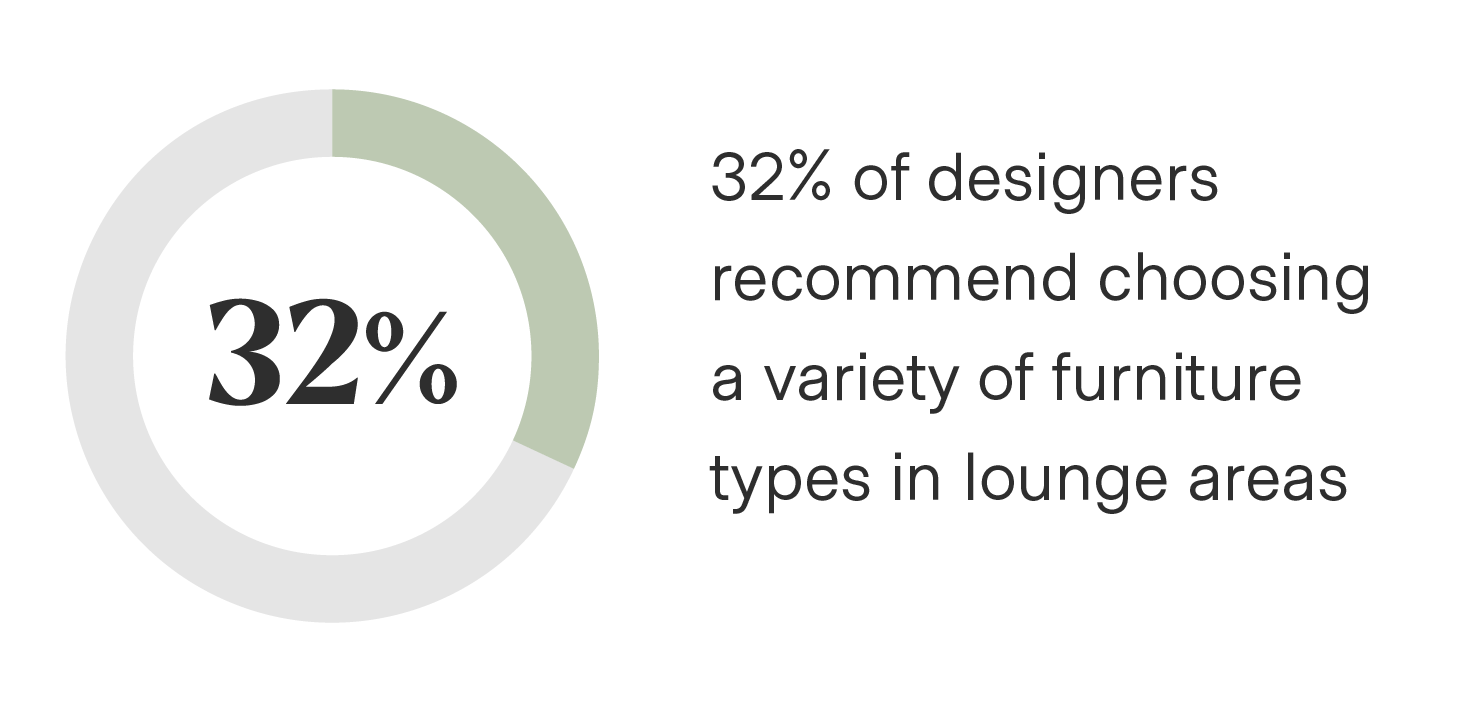
Plants and landscaping
Plants and landscaping can bring your patio to life and create an aesthetically-pleasing environment where you and your guests can feel truly relaxed. They can add color, texture and a natural aroma to your patio, and serve as a functional source of produce for cooking.

Choose plants carefully
Plants can be displayed in a variety of ways: potted in traditional planters or portable container gardens for a low-maintenance solution, planted in an in-ground garden bed near your living space, or suspended in hanging planters for a unique and modern design. Ericka says, “It's worth splurging on a few larger plants if you are establishing a new landscape. Mixing in a few mature or larger plants can really change the overall feeling of the space and provide some anchors while the rest of your landscape fills in.
For a low maintenance yard, choose your plants wisely. Always select plants that will be appropriately sized once fully established– otherwise you’ll be in a constant battle of pruning to keep the size in check. If you are looking to create a low maintenance yard, avoid gardens that have a formal feel and lots of shrubs. Those types of yards usually required ongoing maintenance to keep them looking their best.”
Native plants require less maintenance
It’s a good idea to choose plants that are practical for your local climate. Native plants, for example, are adapted to your area with their own natural defenses against environmental conditions, including local pests, diseases, and climate. These plants will require less watering, less fertilizer, less pesticides and overall fewer resources year-round. Ben Noyes, PLA – Founder of Habitat Landscape Consulting, says, “You want to use as many native plants as possible, because they were designed to thrive in your climate. Native plants will always require less irrigation and typically less pruning/clean-up. You also want to make sure you have the right size plant in the right spot so that you aren’t having to trim anything more than necessary.”
What the experts say

 65% of designers say it’s worth splurging on landscaping when designing the perfect patio. Professionals recommend designing your patio with native plants. When asked to rate the importance of using native plants on a scale of 1-10, the average rating was 8.2. Native plants are beneficial for the environment and easier to maintain.
65% of designers say it’s worth splurging on landscaping when designing the perfect patio. Professionals recommend designing your patio with native plants. When asked to rate the importance of using native plants on a scale of 1-10, the average rating was 8.2. Native plants are beneficial for the environment and easier to maintain.
Lighting

The right lighting can help your outdoor space transition seamlessly between day and night. Lighting can be both functional and decorative, brightening a path to lead guests safely down a walkway when it gets dark and creating an intimate ambience that inspires conversation. There are plenty of options in outdoor lighting, from soft, low-voltage string lights, to spotlights that illuminate focal points, like water features or plants, tea lights on tables, step lights that prevent tripping and hazards at night, or soft hanging lanterns that add visual appeal.
What the experts say

 54% of designers say it’s worth splurging on lighting when designing the perfect patio. When we polled designers, string lights were the most preferred lighting for design. String lights are versatile, easy to affix, and can be hung almost anywhere. Hang string lights over your dining area, above your lounging space, high above a firepit, or drape them around a tree. String lights can be used to bring attention to a focal point or to line the perimeter of your outdoor patio.
54% of designers say it’s worth splurging on lighting when designing the perfect patio. When we polled designers, string lights were the most preferred lighting for design. String lights are versatile, easy to affix, and can be hung almost anywhere. Hang string lights over your dining area, above your lounging space, high above a firepit, or drape them around a tree. String lights can be used to bring attention to a focal point or to line the perimeter of your outdoor patio.
Firepits

A firepit can warm your outdoor space longer into the evening and during the colder months. Firepits can add an air of coziness, intimacy and togetherness to make your space inviting for guests to gather, or family seeking a quiet sanctuary at the end of the day. You can position your firepit as the centerpiece of your main lounging or seating area, or create a separate zone for s’mores or drinks around the fire. Our survey revealed that most professionals preferred a wood-burning firepit over a gas or propane. Wood pits produce more heat than propane or gas burning pits, and are practical for outdoor cooking. Burning wood in your firepit also has an undeniable appeal to it with soothing, crackling sounds and a natural, smoky smell. Smokeless wood-burning firepits can help reduce the amount of smoke produced from the logs in your pit. They provide all the benefits of a traditional firepit, while minimizing smoke and ash to create a more pleasant experience for people sitting around the fire.
What the experts say
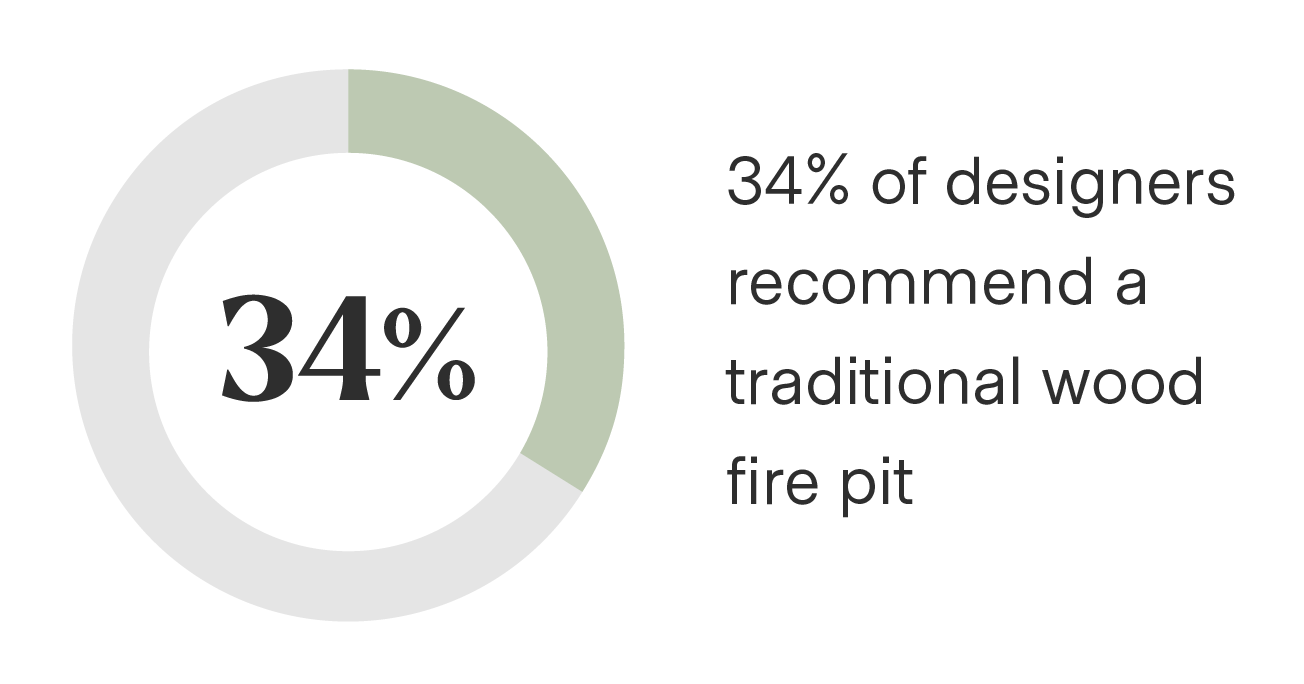

 34% of respondents recommend a traditional wood pit. Another 34% recommended you invest in smokeless wood burning. Whether you opt for a traditional wood pit or smokeless wood burning pit, a firepit in your patio can make for a design that is practical for use throughout colder months.
34% of respondents recommend a traditional wood pit. Another 34% recommended you invest in smokeless wood burning. Whether you opt for a traditional wood pit or smokeless wood burning pit, a firepit in your patio can make for a design that is practical for use throughout colder months.
Amenities
To identify your perfect patio amenity, consider what is most important to you in the function of your space. Are you looking to entertain guests and host dinner parties, rest and read a book in your own private oasis, or a good balance of both excitement and relaxation?

Pools and outdoor kitchens
Pools and outdoor kitchens are two of the most popular luxury amenities for outdoor living. A pool can transform your outdoor space into a de-stress zone or a spot for kids to play and be active. It creates more opportunity for parties and gatherings, and provides an invigorating way to cool off in the summer. Outdoor kitchens are great for entertaining, extending your indoor kitchen and dining space outdoors to create more room, and to bask in the elements while you enjoy a meal. When it comes time to sell your home, having an outdoor kitchen can also increase your home value significantly. The amenities you choose for your patio space can add more personality to your backyard and encourage you to spend more time outdoors.

Other patio considerations
Consider the size, shape, materials and purpose of your patio design to enhance your outdoor space and create a seamless flow from the inside of your home to the outside. Utilize zones and shade sources to maximize space and ensure all-season usability.
Create zones when designing your patio
Ideally, your patio design serves more than one purpose. Whether that includes poolside lounging, backyard BBQs in your outdoor kitchen, a relaxing sofa setup and/or a playful area for children to enjoy, creating zones in your outdoor patio can maximize usable space by cultivating different atmospheres and areas within a single patio. You can establish zones through distance, by positioning a lounging space toward one end of your patio with a separate dining space toward the end, by utilizing different levels with one zone on a raised deck and another surrounding a sunken firepit, or by separating “rooms” with a flower wall or modern privacy screen to create a physical barrier.
Choose a shade source
It’s important to consider all weather elements, including the positions of the sun year-round and how your patio design will provide shade when the sun sets in the winter vs. summer. If the sun is setting and shining directly on your dining table during the summer, it may be too hot to enjoy your space and you may be discouraged from using it during half of the year. “Always consider shade and air flow. Especially if designing in a warm climate, you will never want to sit outside if it isn’t physically comfortable; regardless of the furniture, landscape, or other décor,” says Ben Noyes.
What the experts say
 53% of designers recommended a covered pergola. Pergolas are independently-standing backyard structures with lattice beam roofs that provide coverage from the sun without blocking the sunshine out completely. These can be strategically positioned to protect the areas of your patio that need extra coverage throughout the sunnier months, making every zone of your patio space practical for use year-round.
53% of designers recommended a covered pergola. Pergolas are independently-standing backyard structures with lattice beam roofs that provide coverage from the sun without blocking the sunshine out completely. These can be strategically positioned to protect the areas of your patio that need extra coverage throughout the sunnier months, making every zone of your patio space practical for use year-round.
What to consider for small spaces

For smaller patio spaces, it’s particularly important that you have a sensible design with adequate space in and around each area for you and your guests to navigate comfortably. Design your dining or lounging spaces with a convenient pathway to the bathroom or indoor kitchen. Privacy is also a key consideration when your patio is positioned beside a neighbor’s patio or a populated sidewalk or road. “Typically, a small outdoor space means you may be in close proximity to others, so the first thing I look at is trying to create privacy. You also want it to feel as large as possible, so trying to cover blank walls with green foliage and utilizing smaller/scale-appropriate furniture helps to make the space feel larger,” says Ben Noyes.
Multi-functional furniture
Adding multi-functional furniture pieces that provide additional usable surfaces and/or seating is a great way to maximize space in a smaller patio. Ottomans can be particularly useful as an extra seat, side table, or somewhere to put your feet up in a narrow or compact patio. Ottomans can help elevate your patio design, while creating more space and allowing for easy movement or re-design on a whim. Neighbor’s Braid Ottoman is the perfect addition to a small living space. Ericka Violett weighs in, “For small spaces always make sure the scale of the furniture is appropriate for the size of the space. Avoid crowding too much furniture into a small space and instead choose a couple key pieces that still allow for some breathing room. Multi-functional pieces are also great! An ottoman that can double as a side table for drinks or food can be super helpful in a small space.”
What to consider for larger spaces

Take full advantage of your large patio space. With a larger patio, you have more opportunities to bring in amenities, like a firepit, bar or outdoor kitchen and design intuitively with dining or seating spaces positioned adjacent to your indoor kitchen or bathrooms. Ben Noyes advises, “You need to utilize the opportunities of the site context to your strength. Take advantage of existing vegetation, neighbors landscape/screening, shade/sun, prevailing breezes, etc. The site context plays a crucial role in how your outdoor space is arranged. Also try to make the most efficient connections to the interior spaces you are adjacent to. Create entertaining areas adjacent to indoor entertaining, dining spaces adjacent to the indoor dining/kitchen areas, restrooms/showers next to the pool, etc.”
Landscaping
Consider your landscaping options, such as planting trees in a design that creates a wall surrounding the open sides of your patio. Landscaping with tall plants and trees is a great way to make a large patio space feel cozier and more intimate, while making use of the entire area. You can purchase and plant mature trees so you don’t have to wait years to reap the privacy benefits of a mid to full-sized tree.
Design color
For large patios, add a pop of color to attract the eye toward different areas in your outdoor living space. Color additions can be achieved with simple touches, like outdoor cushions or bright colored flower pots with native plants. A vibrant outdoor rug or colorful blankets and decorative pillows on your chairs or sofas are easy ways to tie a larger design together.
Zones
Creating zones will add different purposes to your space and encourage you and your guests to enjoy your patio regularly for all types of occasions. Design a separate conversation space with a couple of comfortable outdoor chairs or an outdoor sofa, accompanied by a coffee table to place drinks and snacks. Design a versatile grassy area where children or pets can play, where you can enjoy a peaceful morning with yoga or coffee and your favorite book, or organize an al fresco picnic-style meal with friends. “For large outdoors spaces, it’s helpful to create multiple ‘zones’ or seating areas throughout the yard. Make sure each zone has furniture that is placed close enough to be comfortable for conversation, so guests don’t have to shout across that yard to converse. I’d also suggest grouping freestanding planters throughout the space to break it up and add some focal points,” says Ericka Violett.
Tips for creating privacy
When planning your perfect patio design, privacy is a key consideration. You want to be able to relax and feel like you’re truly in your own space without neighbors or passersby peering in. Plants are ideal for enclosing your patio while bringing a natural element to your lounging or dining area. They can be positioned as zone separators or as barriers around the perimeter of your dining or lounging space. Tall grasses and bamboo are great plants for adding a rustic touch to your patio design while concealing your seating areas.
Screening plants and outdoor curtains
Ben Noyes says, “We typically always try to use plants to create screening. Using something that is living will create a greater sense of connection with nature. Also, any element that creates a peaceful sound will help mitigate any noisy neighbors.” However, you have options when it comes to creating privacy in your patio. If screening plants aren’t practical for your space right away, installing a privacy fence or curtains could be a quick solution to creating a barrier around your outdoor living space. “Screening plants are always one of the best ways to add privacy, but can take some time to grow. In the meantime, outdoor curtains can do a lot for yards that are more exposed-- select something light and gauzy, so it doesn’t feel too heavy,” says Ericka Violett. You can install a retractable canopy or screen, a cost-effective hanging screen made of basic outdoor materials, floor-to-ceiling curtains, a slatted wall or fence on one side of your patio, or a no-maintenance faux plant wall.
Tips for entertaining

If you’re aiming for a patio designed for entertainment, choosing complementary amenities and lighting is one of the quickest ways to transform your space. Think of amenities that stimulate the senses. With surrounding music from the speaker, the smell of a wood firepit, grill or simple candles, visually-appealing plants or artwork, and mood lighting, your patio will be perfect for large gatherings and lively energy. “Every entertainer needs an outdoor speaker, lighting to set the vibe (once the sun goes down), furniture for guests to lounge in and some closed storage to put away things you don’t want to look at! Bonus items include: a fire or water feature and a grill,” says Ericka Violett.
Design with sustainability in mind
Consider how each element of your patio, from your deck or flooring material to your furniture material, will either benefit or take away from the ecology in your backyard space. Professionals prefer designing with sustainable materials. When asked to rate the importance of using sustainable materials on a scale of 1-10, the average rating was 8.2. According to Ben Noyes, it’s best to “Not only create something beautiful but create a natural thriving habitat. Perhaps that means utilizing edible plants and/or native pollinator plants throughout the design and creating a home for birds, bees, butterflies along with their human companions.” Consider adding a modern birdhouse or bird feeder to supply local animals with food, water or shelter, designing a garden area with pollinator-friendly plants, or embedding a vegetable garden that supplies your kitchen with fresh, homegrown ingredients.
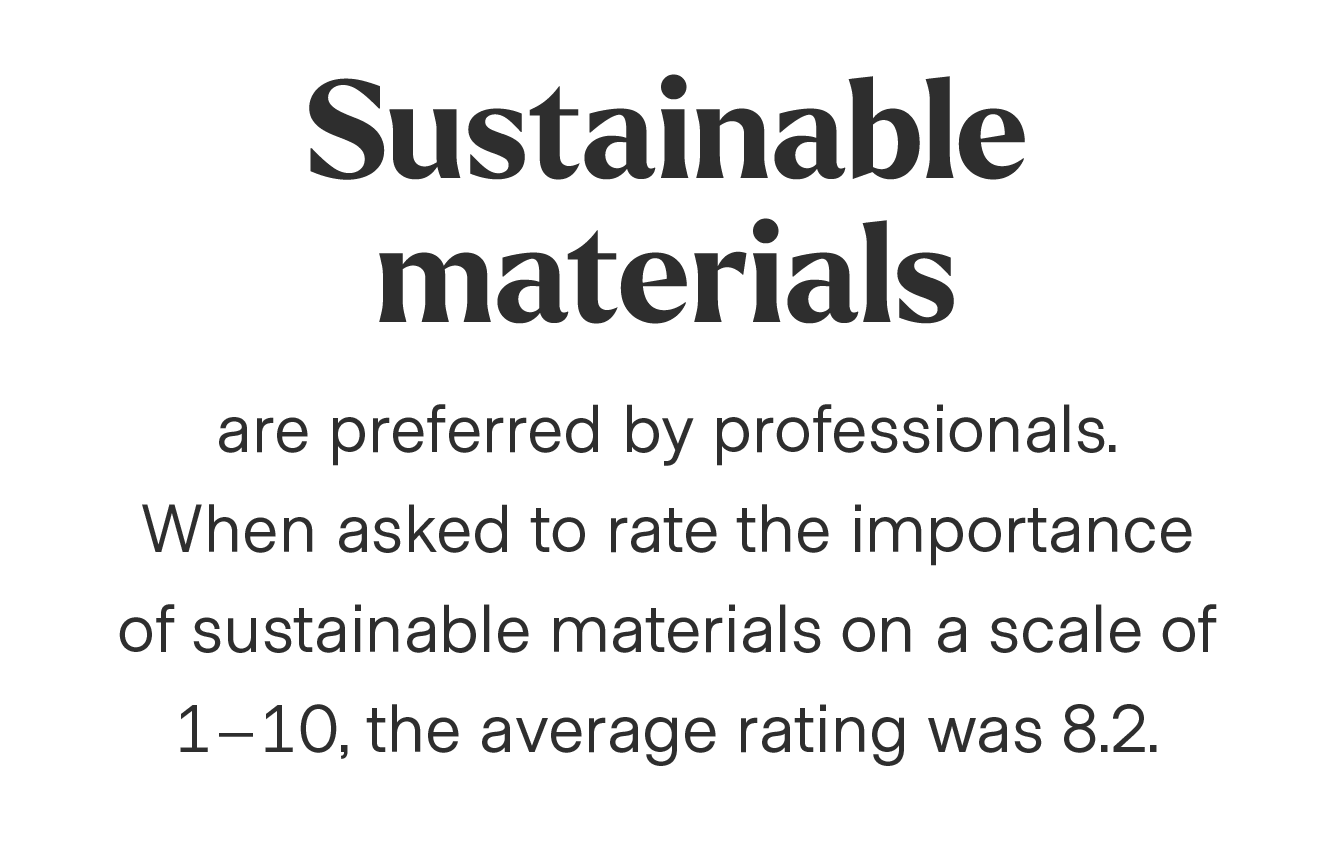
How to budget a patio design
The average patio redesign costs about $20k - $30k, depending on the size of your space, the amenities you choose, and the scope of landscaping and hardscaping. If you’re installing an in-ground pool or building an entirely new deck or stone patio, your project is likely to cost upwards of $30k. For quality outdoor furniture that lasts through the seasons for years, you can expect to spend anywhere from $2k to upwards of $15k. Furniture costs will vary greatly based on how much space you have, how many zones you create and how many pieces you choose. Landscaping can cost about $4 to $12 per square foot, while hardscaping can cost about $15 to $50 per square foot. In total, hardscaping and landscaping can each run you anywhere from $4k to $10k, depending on the size of your space and the scope of the project. Labor can cost about $5 to $11 per square foot, again, depending on the size and scope of your project.

However, there are a few ways you can cut costs to save some money. Ericka Violett says, “String lights and outdoor rugs are items where you can save some money– there are great options at reasonable price points.”The furniture pieces that you’ll be relaxing on, dining at, and hopefully enjoying for the next 5 to 10 years are integral to your outdoor experience and should be prioritized in your budget. Ericka advises, “Quality furniture is always worth splurging on. Investing in furniture that will last for many years, always beats out furniture that looks great at first, but shows wear and tear quickly. I also think it’s worth splurging on a few larger plants if you are establishing a new landscape. Mixing in a few mature or larger plants can really change the overall feeling of the space and provide some anchors while the rest of your landscape fills in.”
When you consider the long-term payoff of redesigning your patio, you can get an estimated 64.8% return on your investment when selling your home. Investing in your perfect patio design can not only maximize you and your family's enjoyment of your space while you live there, but it can generate a considerable profit down the line too. Check out Ben Noyes’ and Erick Violett’s instagrams for more beautiful design ideas:
Ben Noyes, PLA – Founder of Habitat Landscape Consulting: Instagram
Ericka Violett, Principal Designer at Sill Design Co: Instagram

